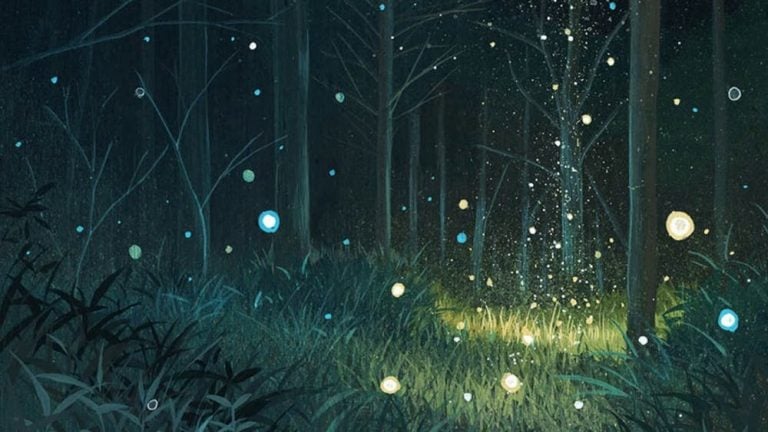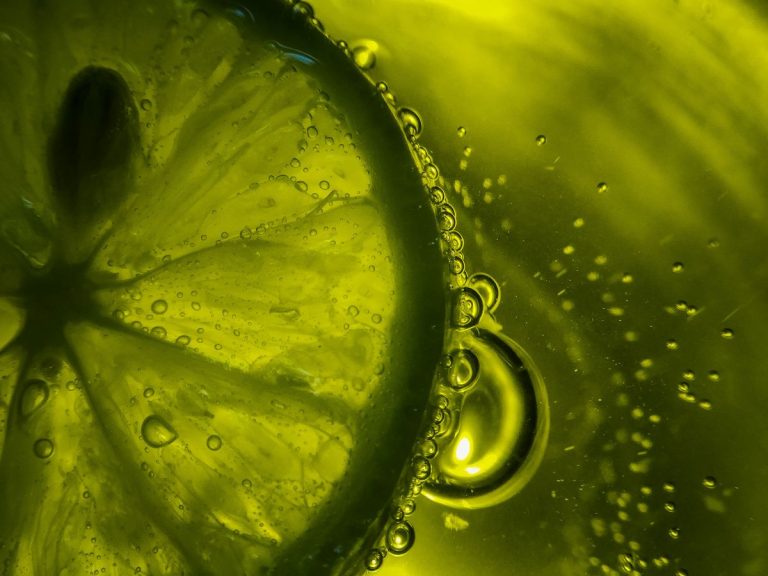Yellow is a bright and fun color that you can see in lots of natural things. It’s the color of sunshine, tasty bananas, and pretty flowers like daisies. In this blog post, we’re going to take a look at 50 things in nature that are yellow. From the tiny, twinkling lights of fireflies on a summer night to the big, bold sunflowers turning towards the sun, yellow adds a splash of happiness to the world.
As we talk about each yellow thing, you’ll see how interesting and different they can be. Some you might see every day, like in your backyard or on a walk, while others might be totally new and exciting to learn about. No matter if it’s an animal, a plant, or something else cool in nature, every yellow thing has a neat story to tell. So, let’s start our adventure and discover all the awesome yellow stuff around us!
1. Balkan Clouded Yellow
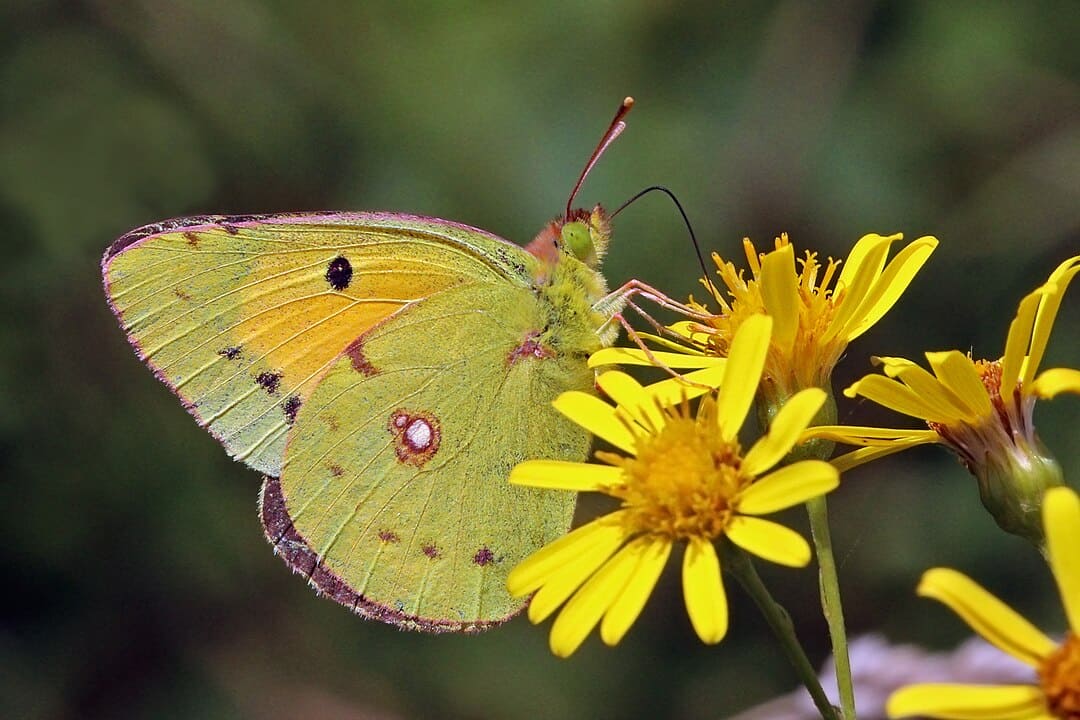
The Balkan Clouded Yellow is a bright yellow butterfly found in the Balkan area. It has yellow wings with black edges and likes open, flower-filled places. A cool fact about it is that the males fly to high places to find females, which is a special way they try to impress them.
2. Golden Zucchini
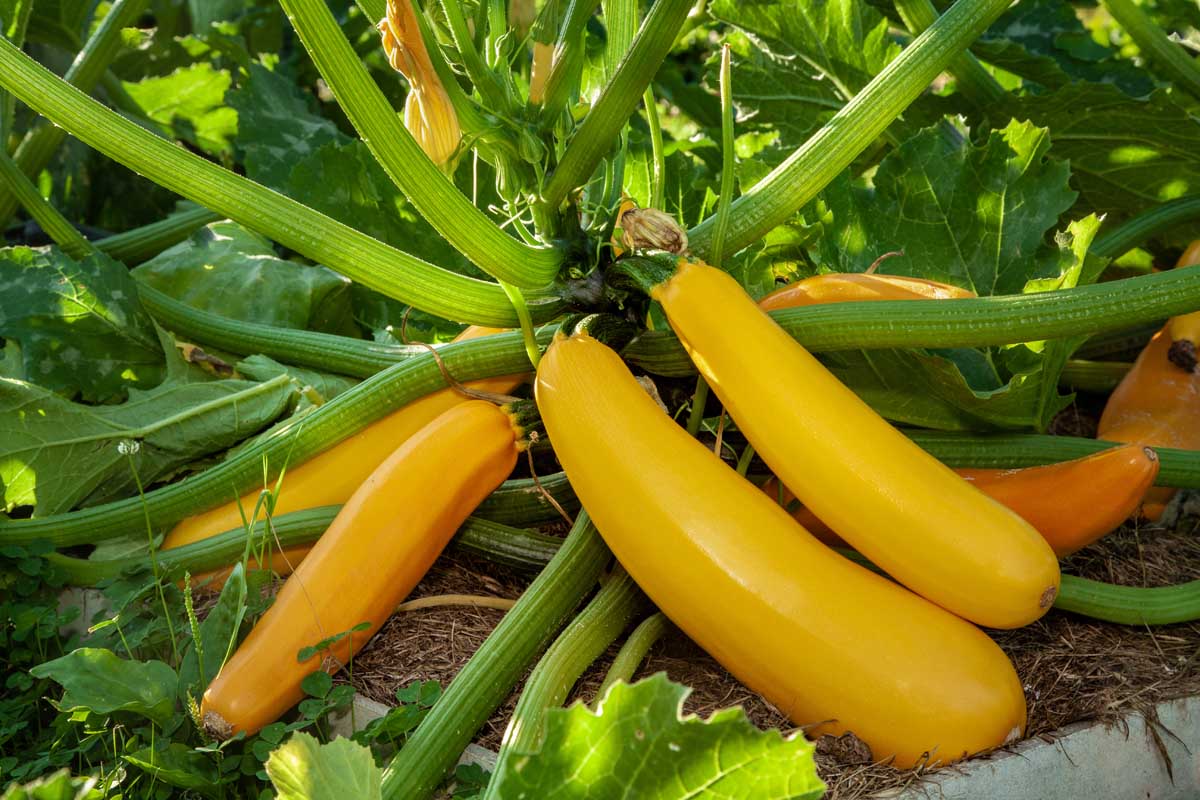
Golden zucchini, also known as yellow zucchini, stands out in gardens and dishes with its vibrant yellow skin, contrasting the more common green variety. It tastes similar to the green zucchini, offering a slightly sweeter flavor, making it a favorite for adding color and taste to salads and cooked dishes. Interestingly, golden zucchini is just as nutritious, packed with vitamins and antioxidants.
3. Golden Delicious Apples
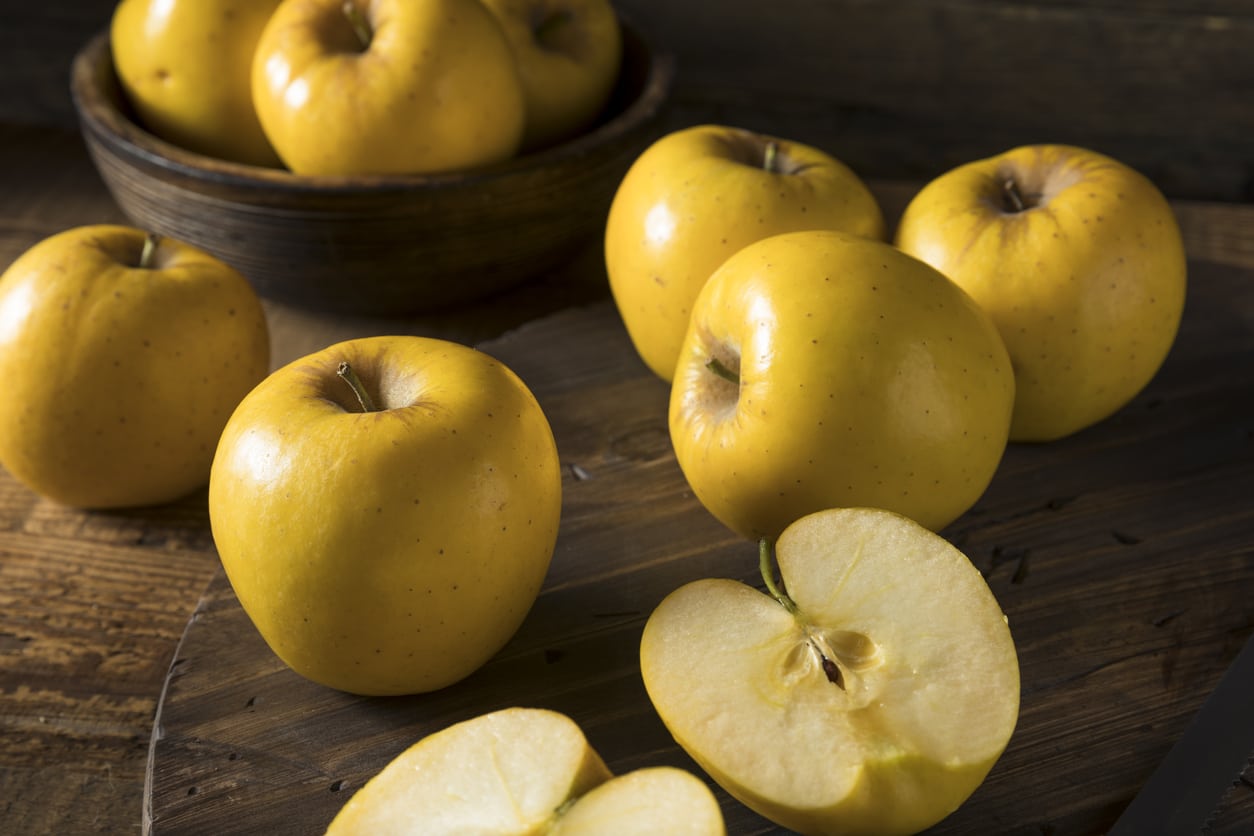
Golden Delicious is a popular variety known for its bright yellow skin and sweet, mild flavor. They are incredibly versatile, used in both raw and cooked forms, from fresh salads to baked goods. One interesting fact about yellow apples is their natural resistance to browning once cut, making them more appealing in dishes where appearance is key.
4. Nelumbo Lutea
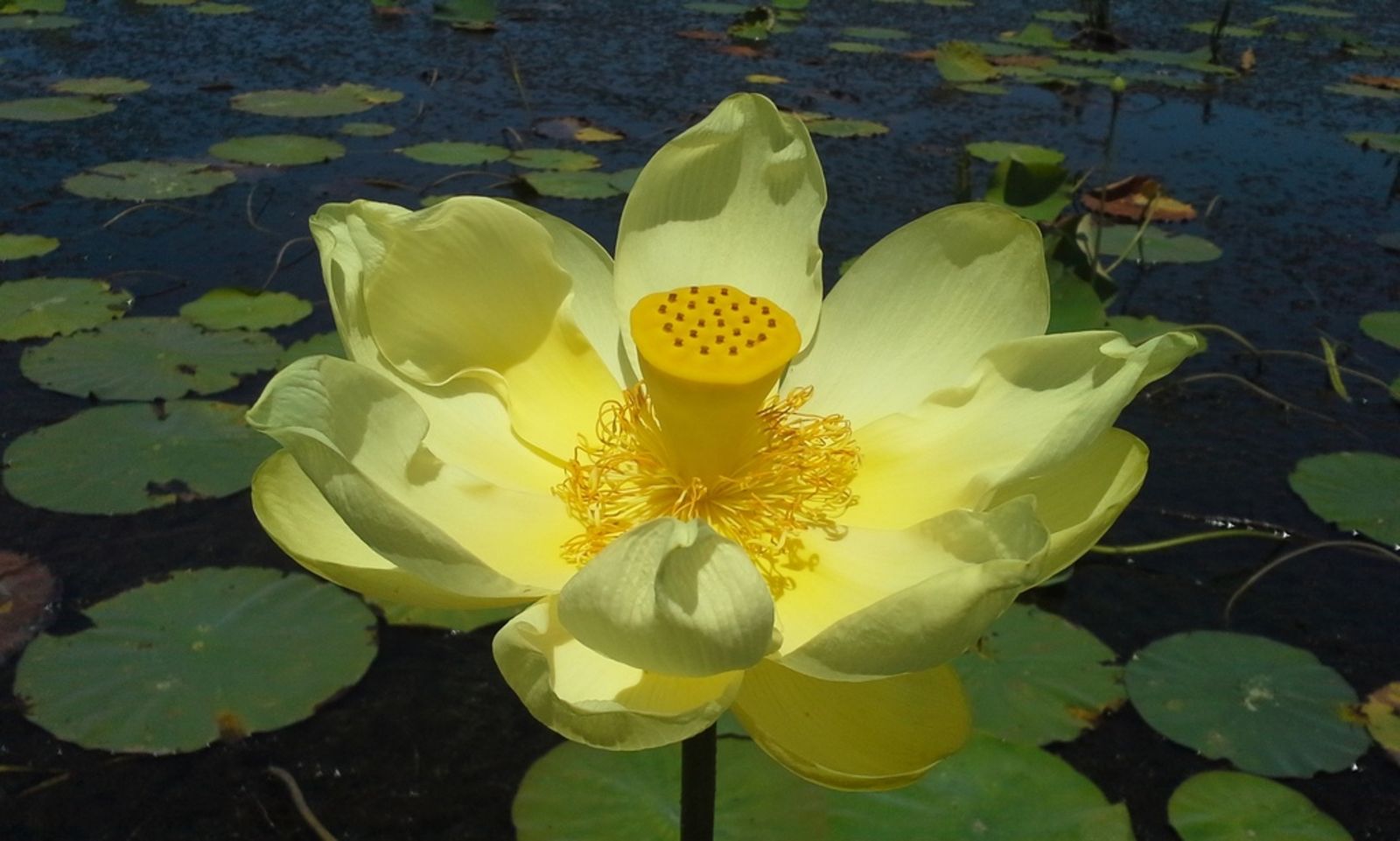
Nelumbo lutea, commonly known as the American lotus or yellow lotus, is a beautiful aquatic plant native to North America. It is distinguished by its large, bright yellow flowers and broad, round leaves that float on the water’s surface. Additionally, its seeds and roots are edible and have been used by Native American tribes for food and medicine, showcasing its cultural and nutritional importance.
5. Yellow Yolk
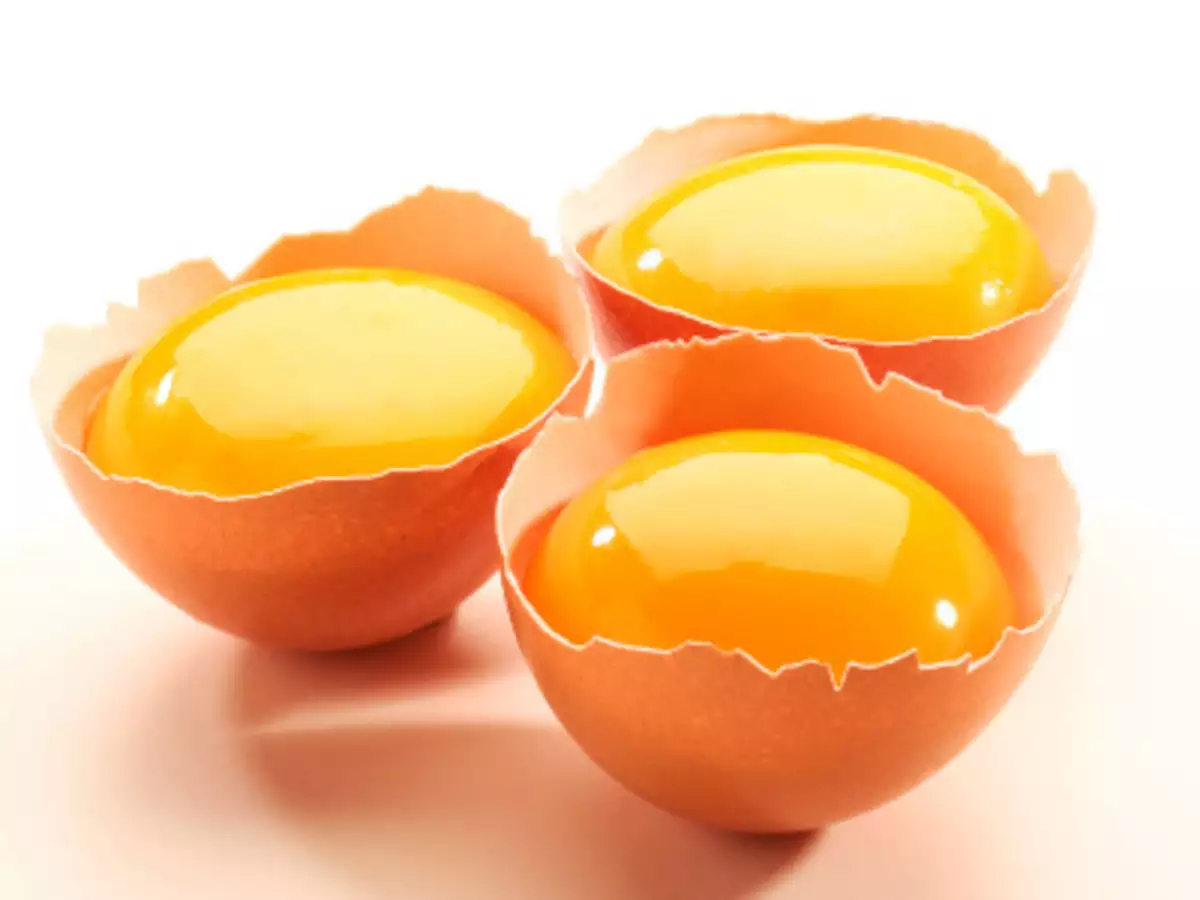
The yellow yolk inside an egg is a rich source of nutrients, including vitamins, minerals, and proteins, vital for a balanced diet. Its color can range from light yellow to deep orange, depending on the hen’s diet; hens fed a diet high in carotenoids, like marigold petals, will produce eggs with darker yolks. Despite misconceptions, the yolk is also a good source of vitamin D and antioxidants, making it not just flavorful but also nutritionally valuable.
6. American Goldfinch
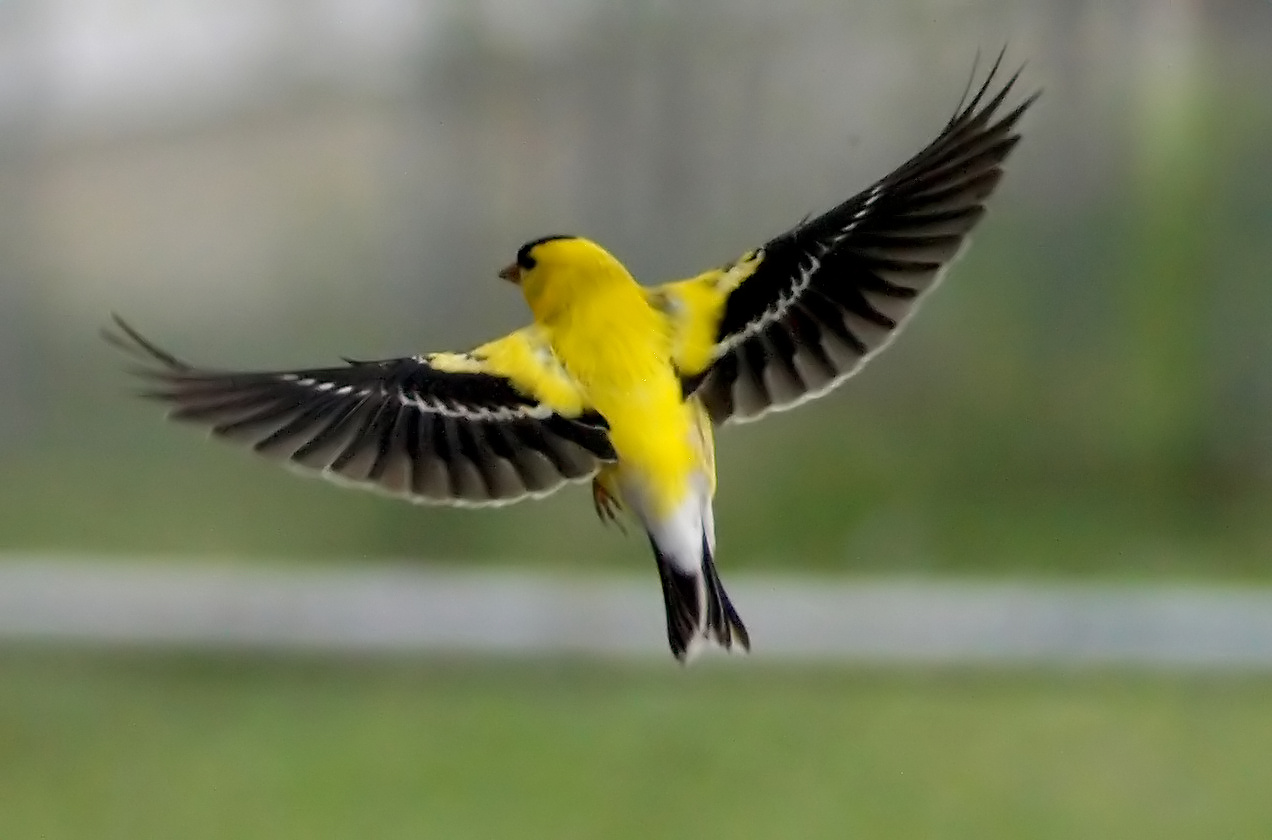
The American Goldfinch is a small bird with bright yellow feathers in males during summer. It changes color, becoming brownish in winter. This bird is special because it only eats seeds, not bugs, and even feeds its babies seeds. It breeds late in the summer to match when most seeds are available, showing how well it adapts to its diet.
7. Acacia Blossoms
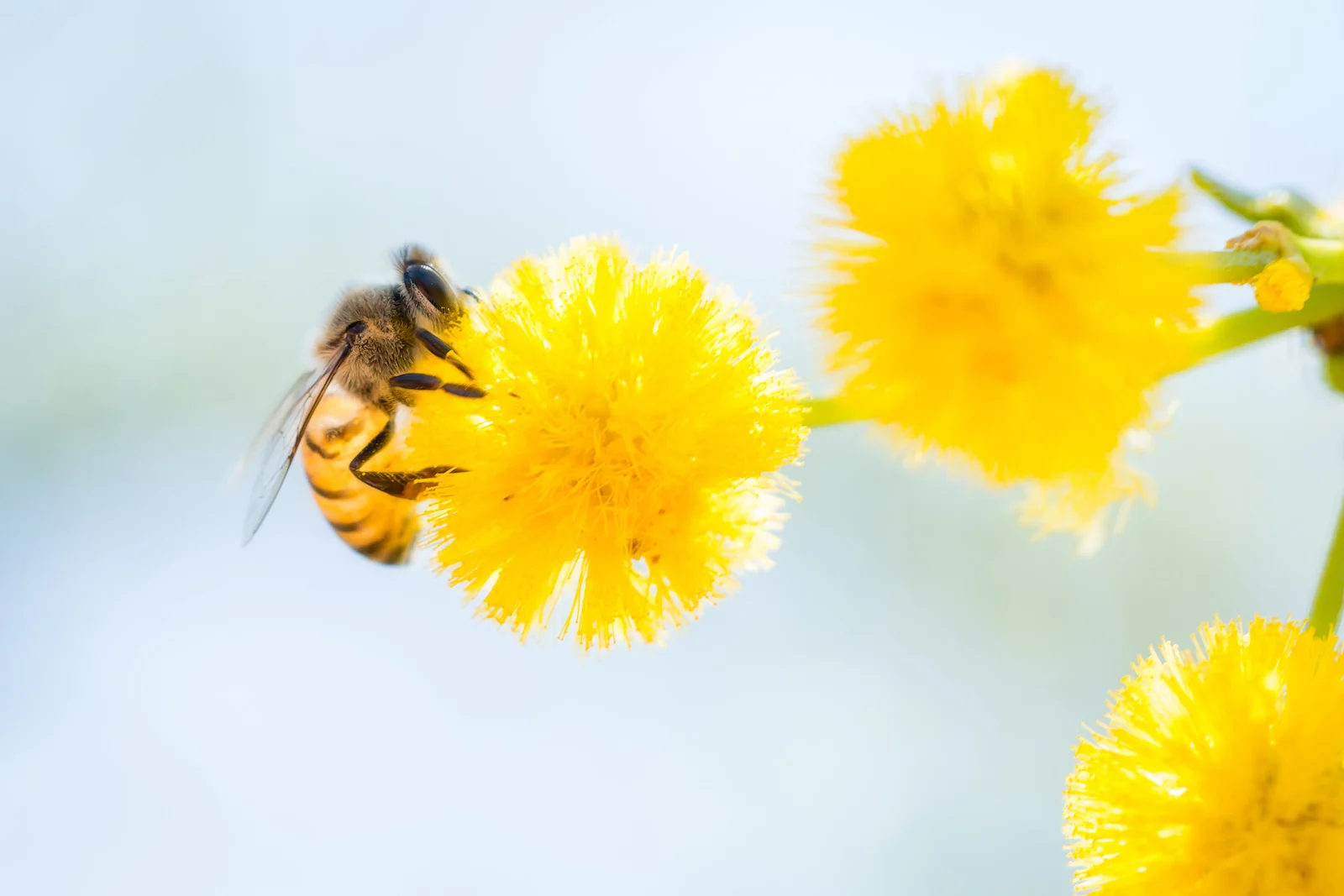
Acacia blossoms are bright yellow flowers from the acacia tree, known for their sweet fragrance and delicate appearance. These flowers are not only beautiful but also useful, as they attract pollinators like bees, which help in the pollination process. In some cultures, acacia blossoms symbolize secret love and are used in various ceremonies and traditions.
8. Albino Burmese Python
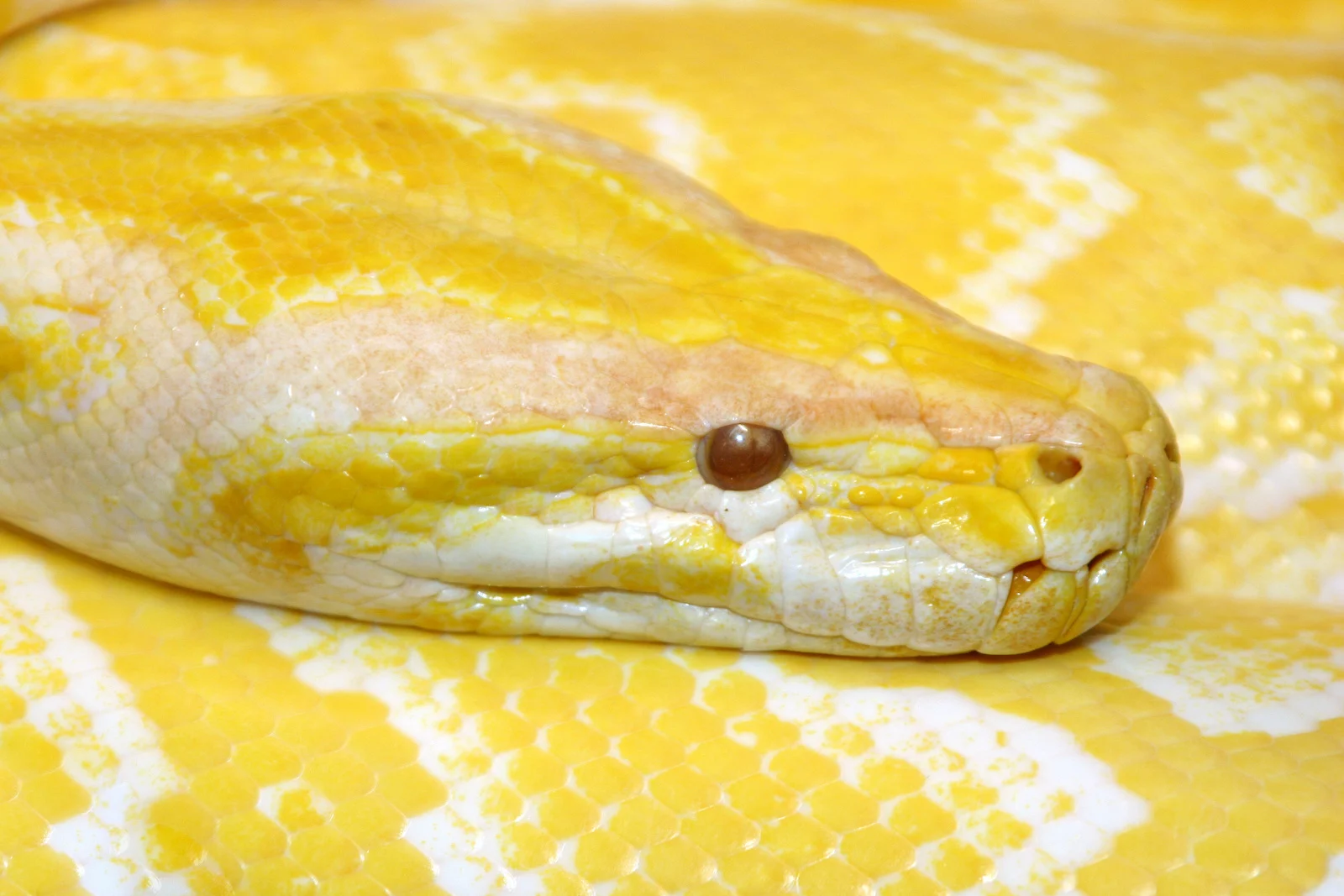
The Albino Burmese Python is a striking variant of the Burmese python, notable for its bright yellow and white scales with pink or red eyes, lacking the typical dark pigments due to a genetic mutation. These large constrictor snakes can grow up to 23 feet long, making them one of the largest snake species. Despite their imposing appearance, they are known for their relatively docile nature when raised in captivity.
9. Carambola Fruit
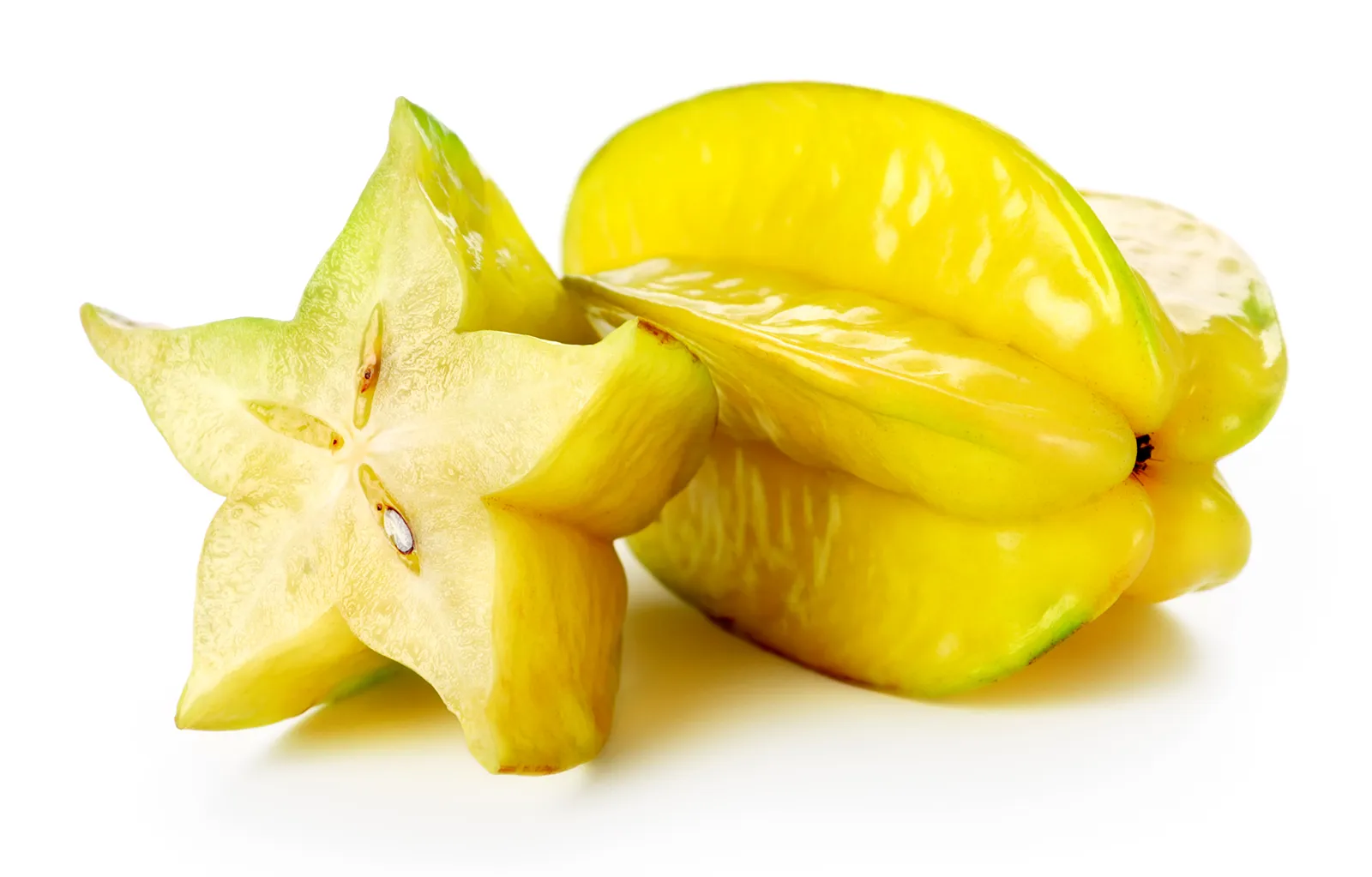
Carambola fruit, commonly known as star fruit due to its unique star shape when sliced, boasts a vibrant yellow skin and juicy, crisp flesh. Native to Southeast Asia, this fruit has a sweet and slightly tart flavor, making it a favorite for fresh eating, cooking, and garnishing. However, individuals with kidney problems are advised to avoid it, as it contains oxalates that can be harmful in such conditions.
10. Canary Bird

The Canary bird, known for its vibrant yellow feathers and melodious song, is a small songbird that originally hails from the Canary Islands, Madeira, and the Azores. These birds have been bred in a variety of colors, but the classic yellow variant is perhaps the most famous and sought-after. Canaries are not just beautiful; they are also historically significant, once used in coal mines to detect toxic gases, serving as an early warning system for miners.
11. Chrysanthemum
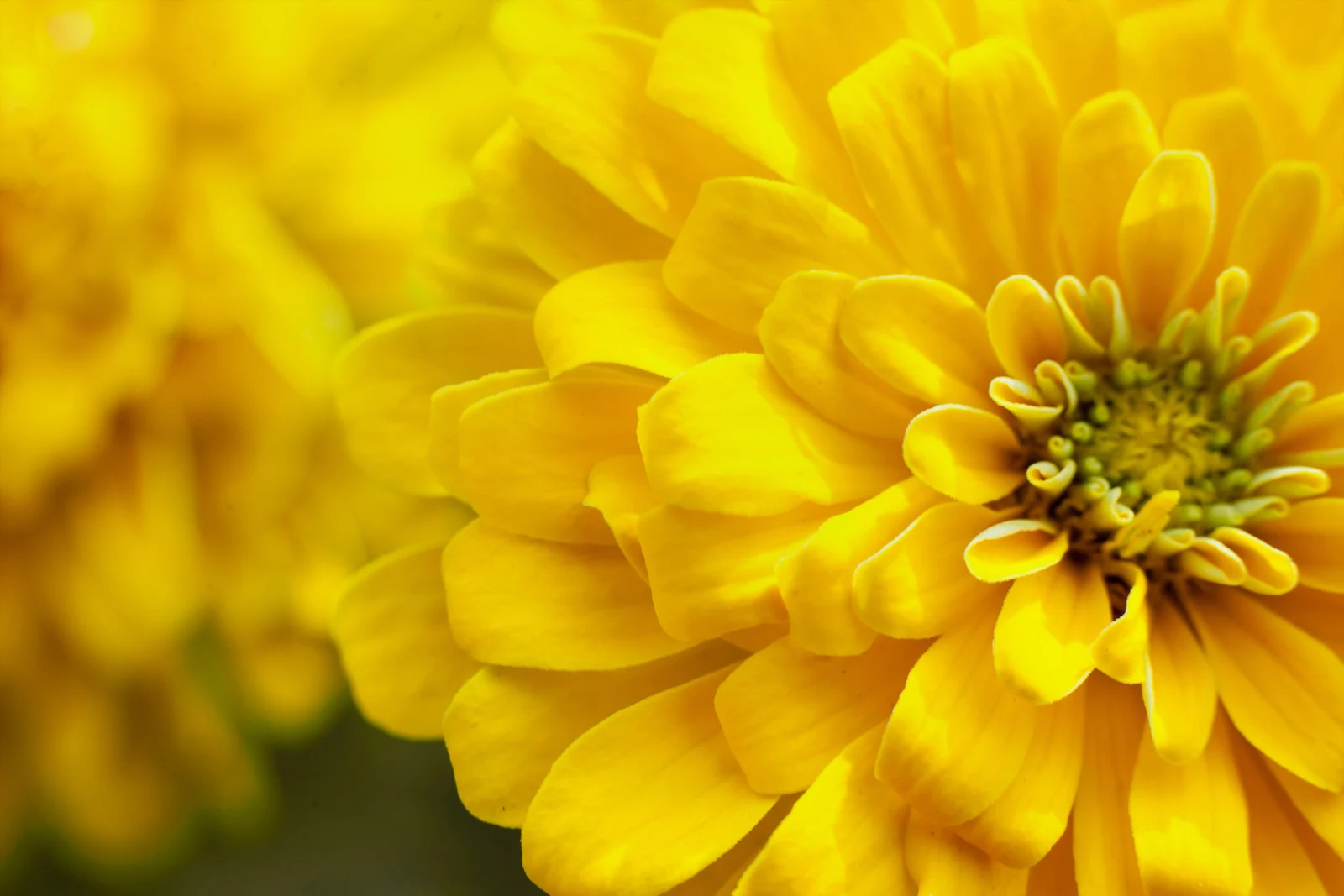
Chrysanthemums, often simply called “mums,” are popular flowers known for their bright, cheerful blooms that come in a variety of colors, including vibrant shades of yellow. Originating from Asia, these flowers symbolize joy and beauty but can also represent sorrow in some cultures. Chrysanthemum tea, made from the flowers, is a refreshing drink believed to improve vision and soothe sore throats.
12. Citrine Stone
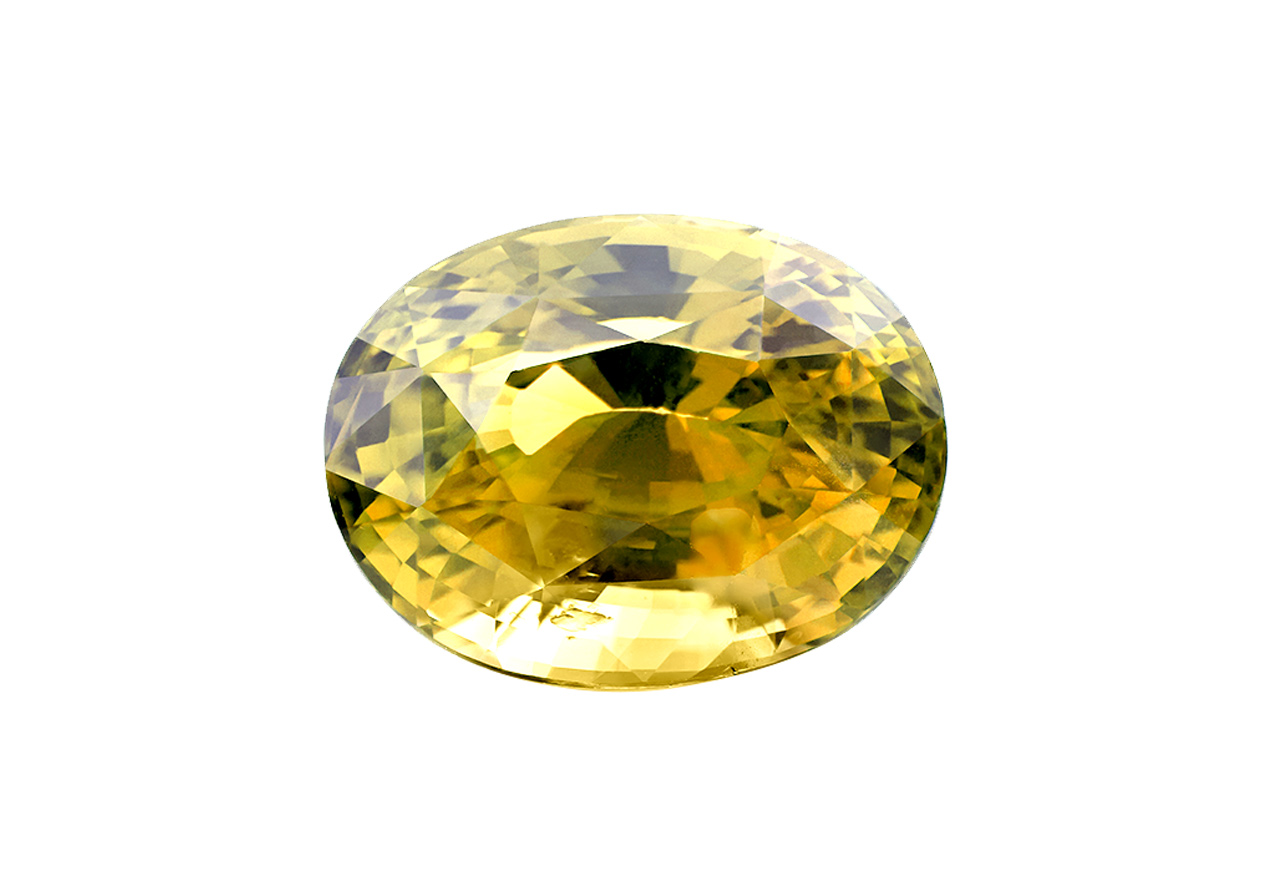
Citrine is a stunning yellow to orange-colored gemstone belonging to the quartz family. It’s cherished for its vibrant color, which can range from pale yellow to deep amber, often drawing comparisons to the warmth and energy of the sun. Citrine is known as the “merchant’s stone” because of a belief that it can attract wealth and prosperity, making it a popular choice among those seeking to enhance their financial success.
13. Ananas
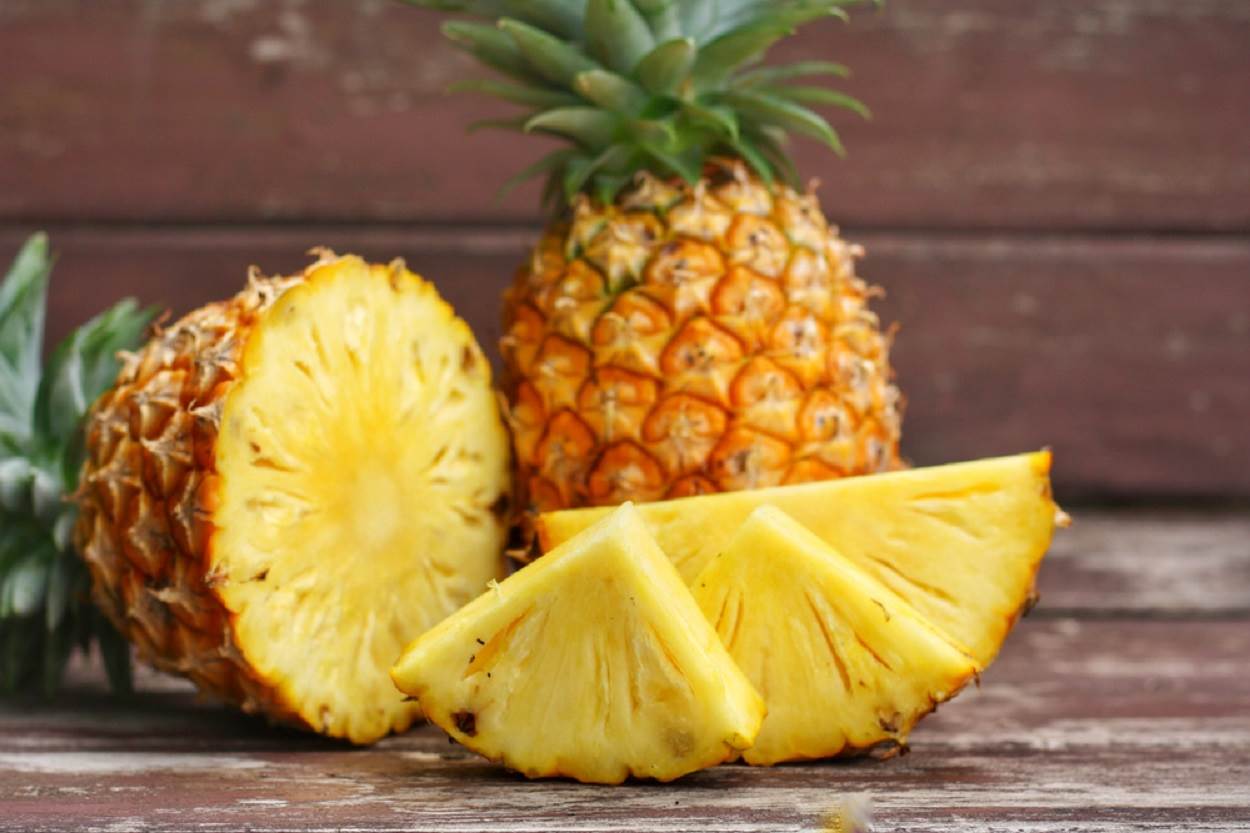
Ananas, more commonly known as the pineapple, is a tropical fruit distinguished by its rough, spiky exterior and sweet, juicy yellow flesh inside. This fruit is native to South America but has become a staple in cuisines around the world. Pineapples are not only delicious but also packed with vitamins, enzymes, and antioxidants, making them great for boosting immunity and aiding digestion.
14. Ducklings
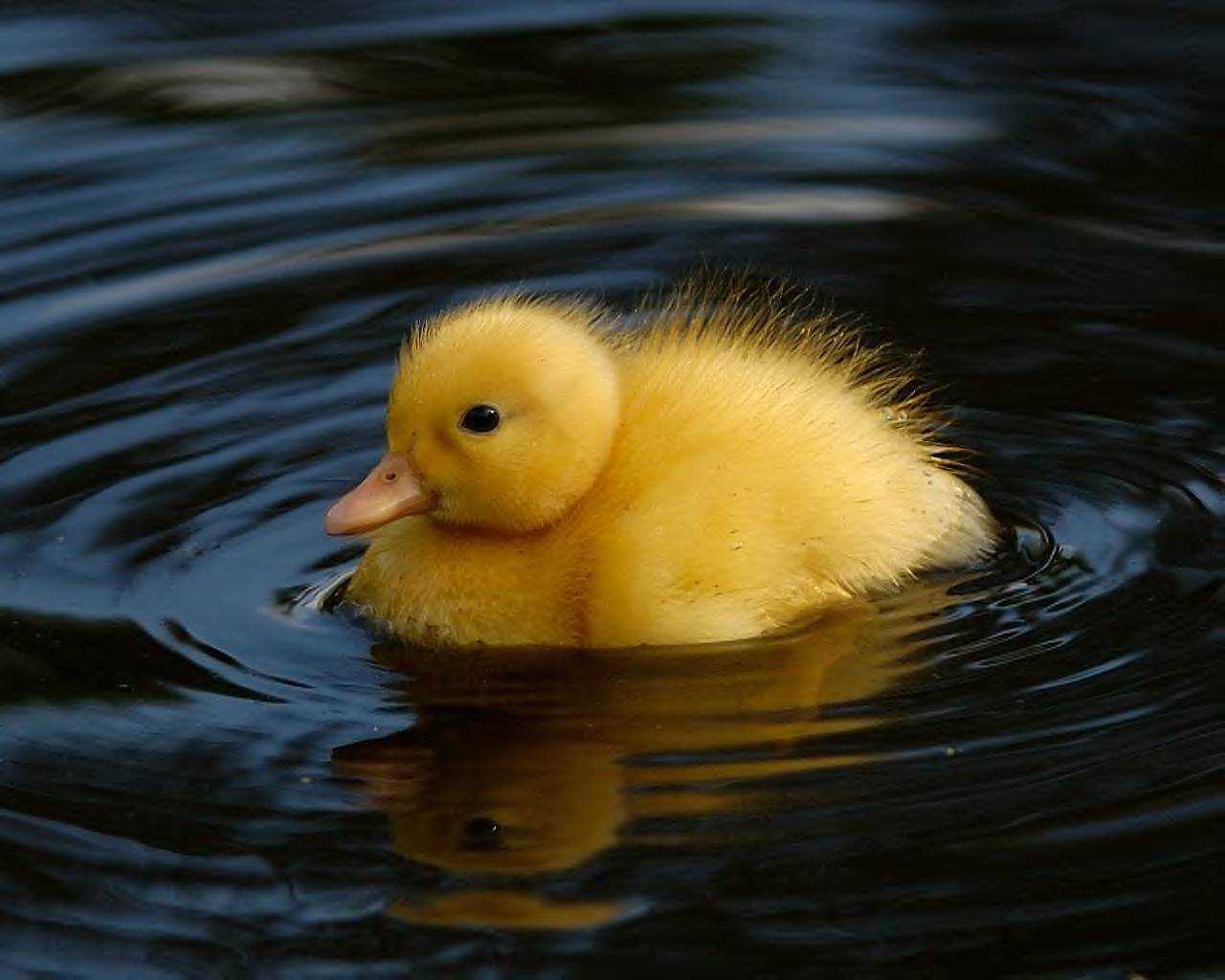
Ducklings are young ducks, known for their soft, fluffy feathers that are often yellow, especially in domestic breeds. These adorable creatures are capable of walking and swimming shortly after hatching, showcasing their remarkable independence. Ducklings grow quickly, shedding their downy fluff for adult feathers within weeks, transforming into the familiar appearance of adult ducks.
15. Bananas
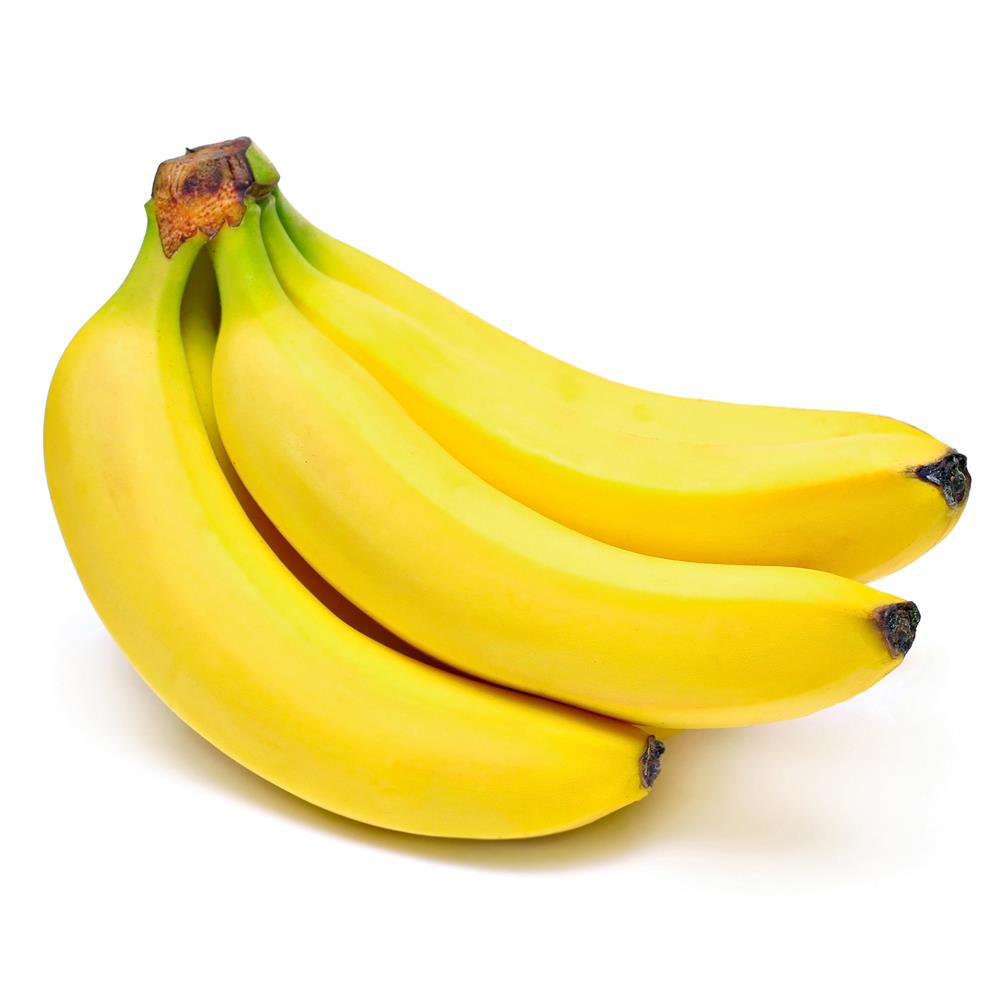
Bananas are a widely consumed fruit known for their soft, sweet flesh encased in a yellow peel when ripe. They originate from Southeast Asia but are now grown in tropical regions around the world. Rich in potassium, fiber, and vitamins, bananas are beneficial for heart health and digestion. They are incredibly versatile, eaten raw, used in baking, smoothies, and even in cooking, in dishes such as banana bread and fried plantains.
16. Orange Yellow Sea Nettle
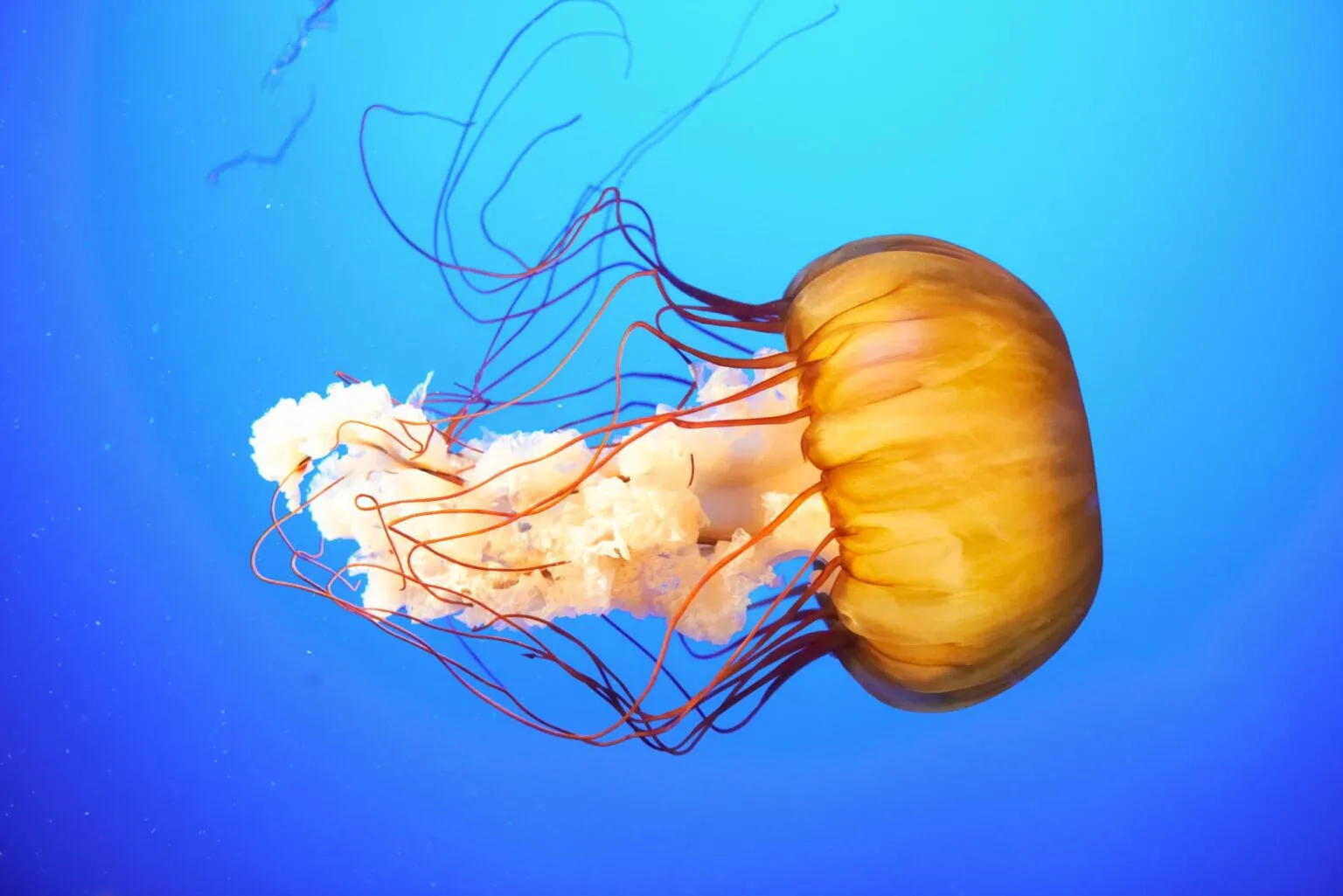
The Orange-Yellow Sea Nettle is a captivating variety of jellyfish known for its striking coloration, blending shades of orange and yellow throughout its bell and tentacles. These marine creatures are found in oceans around the world and are recognized for their graceful, undulating movements through the water. Their luminescent glow adds an ethereal quality to their appearance, especially noticeable in darker waters or during night dives.
17. Yellow Roses
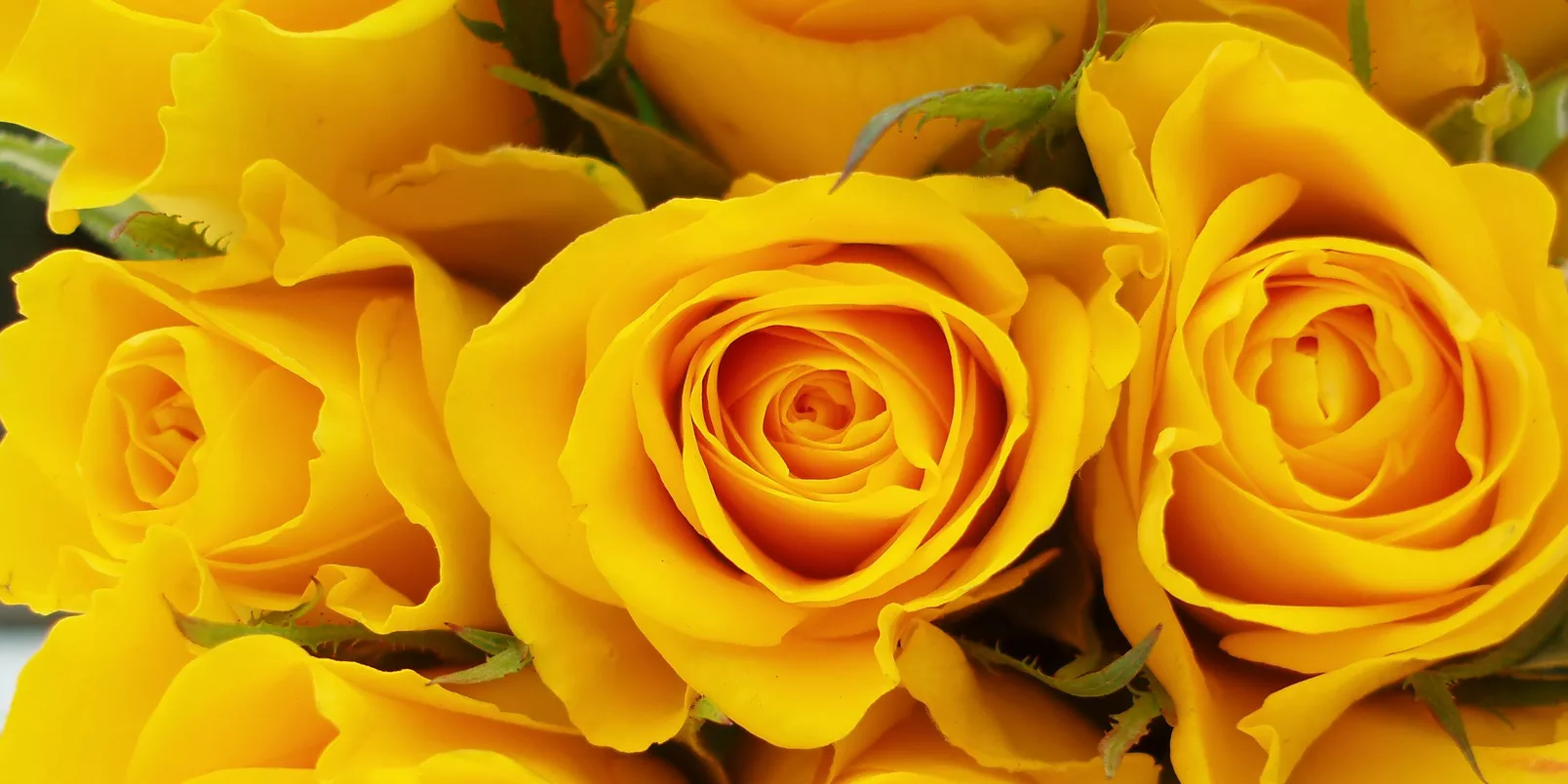
Yellow roses are vibrant flowers that symbolize friendship, joy, and good health. Unlike red roses, which are often associated with romantic love, yellow roses convey warm, platonic feelings and are a popular choice for celebrating friendships, offering congratulations, or wishing someone well. These roses are also admired for their fragrant blooms, which can vary in intensity and scent depending on the variety, making them a delightful addition to any garden or bouquet.
18. The Sun

The Sun is a massive, glowing sphere of hot gases at the center of our solar system. It’s a star made primarily of hydrogen and helium, undergoing nuclear fusion that releases tremendous amounts of energy, which lights up and heats the Earth. The energy produced by the Sun is essential for life on Earth, driving our climate and weather systems and enabling photosynthesis in plants.
19. White-tailed Bumblebee
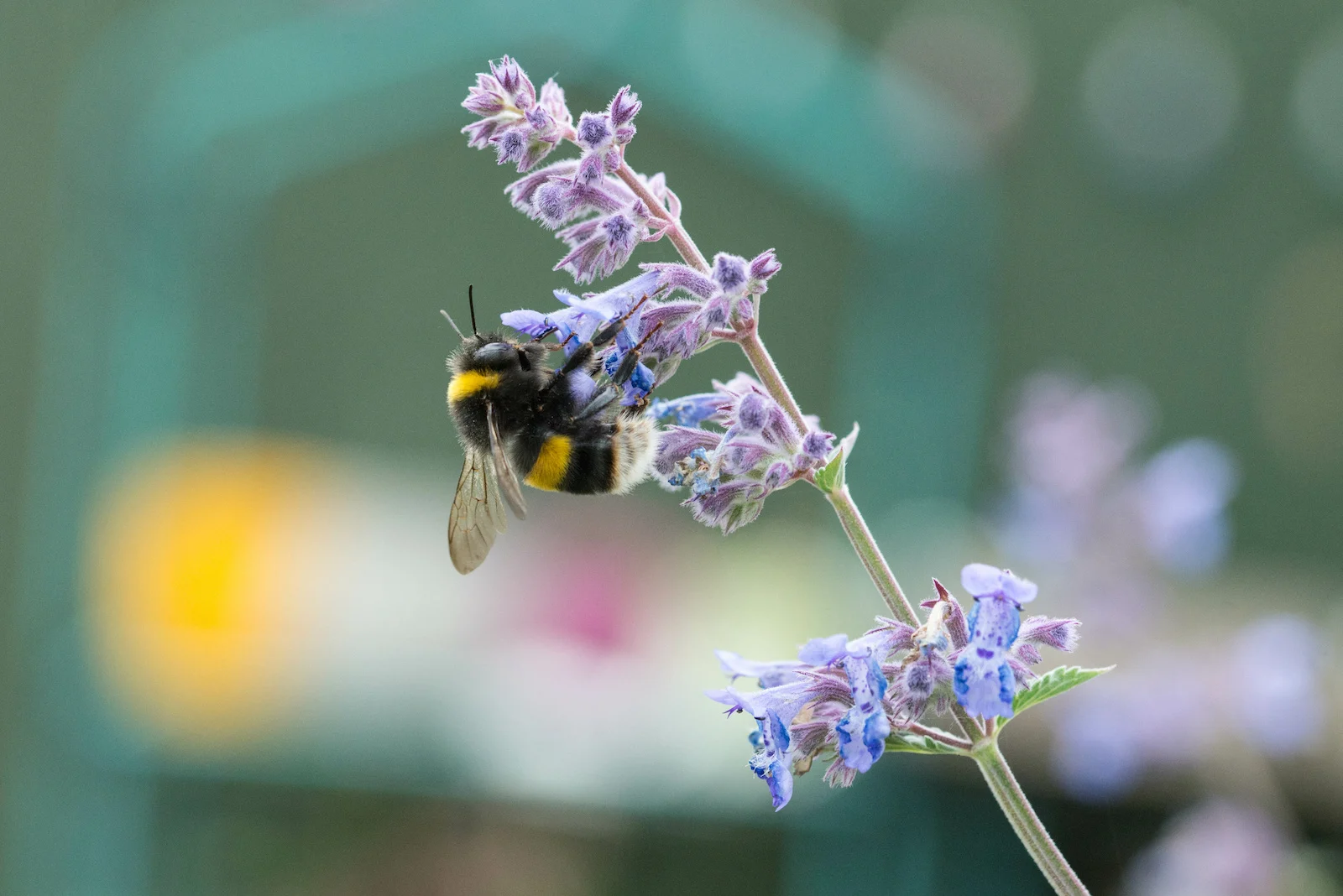
The White-tailed Bumblebee is a common bee with a black body and white tail, found in Europe and Asia. It’s important for pollinating plants, and helping gardens and farms. These bees live in groups with a queen and workers. They’re crucial for growing food and keeping plants healthy, but they’re at risk of losing homes, chemicals, and changing weather.
20. Yarrow Blossom
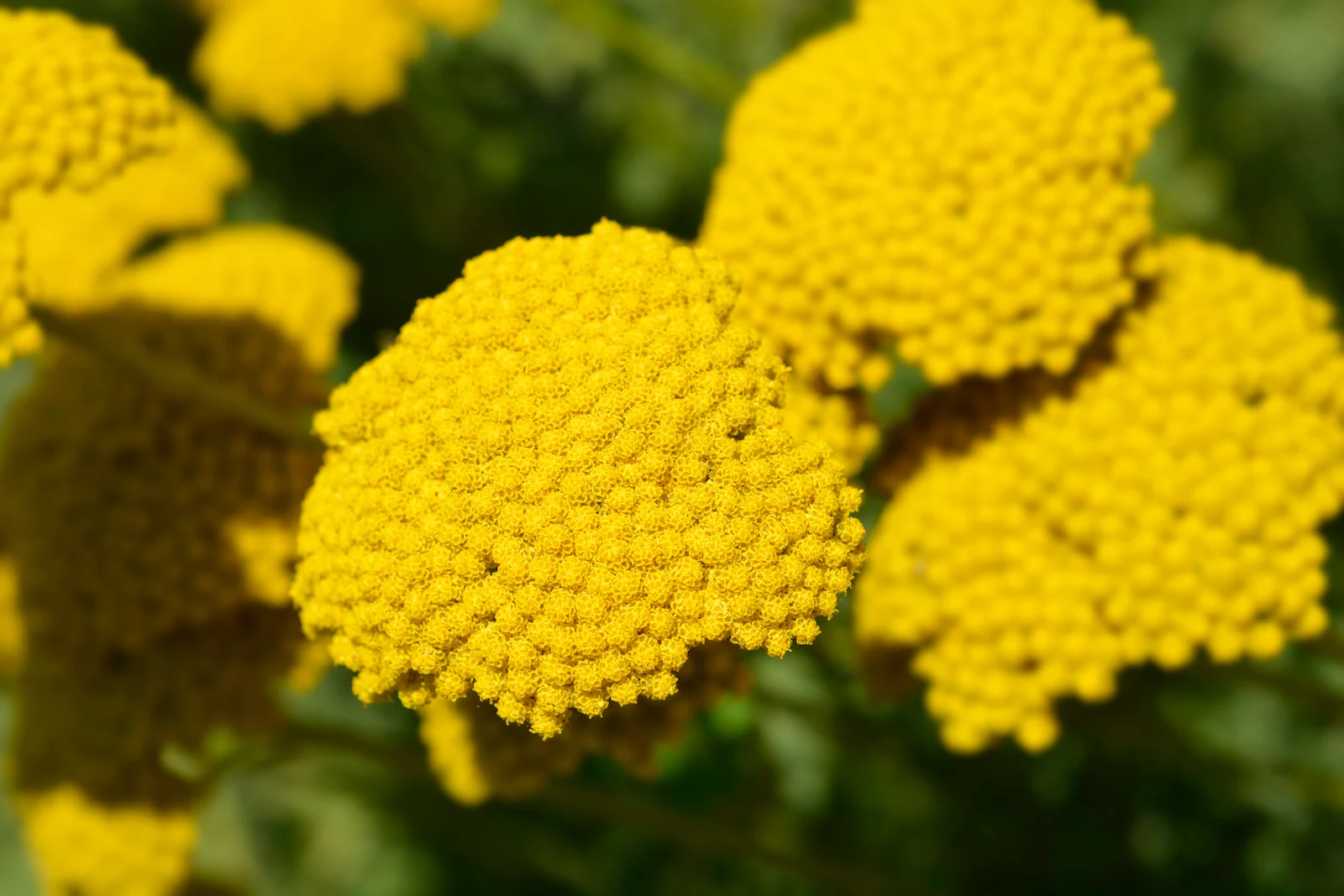
Yarrow blossoms are small flowers that can be white, pink, or yellow, growing on a plant good for dry gardens and attracting helpful bugs. Yarrow has been used for a long time to help with things like fevers and cuts because it’s thought to help heal and reduce swelling. It’s also linked to old stories about bravery and safety.
21. Yellow Acacia Flower
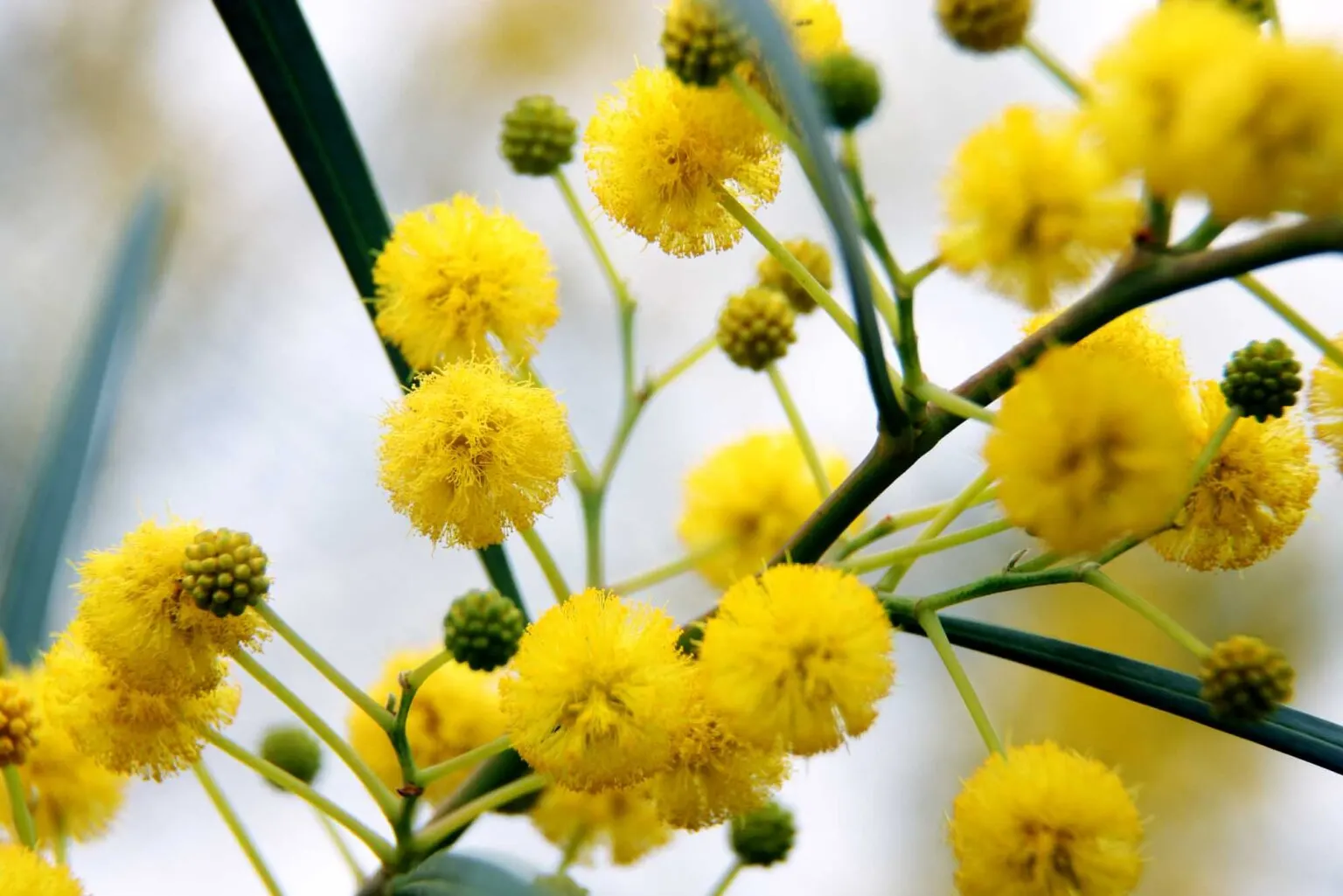
The Yellow Acacia Flower comes from the acacia tree, known for its bright yellow, fluffy blossoms that give off a sweet fragrance. These trees are not only beautiful but also important for the environment, attracting bees and other pollinators. This flower symbolizes secret love and can be found in warm climates around the world.
22. Yellow American Warbler
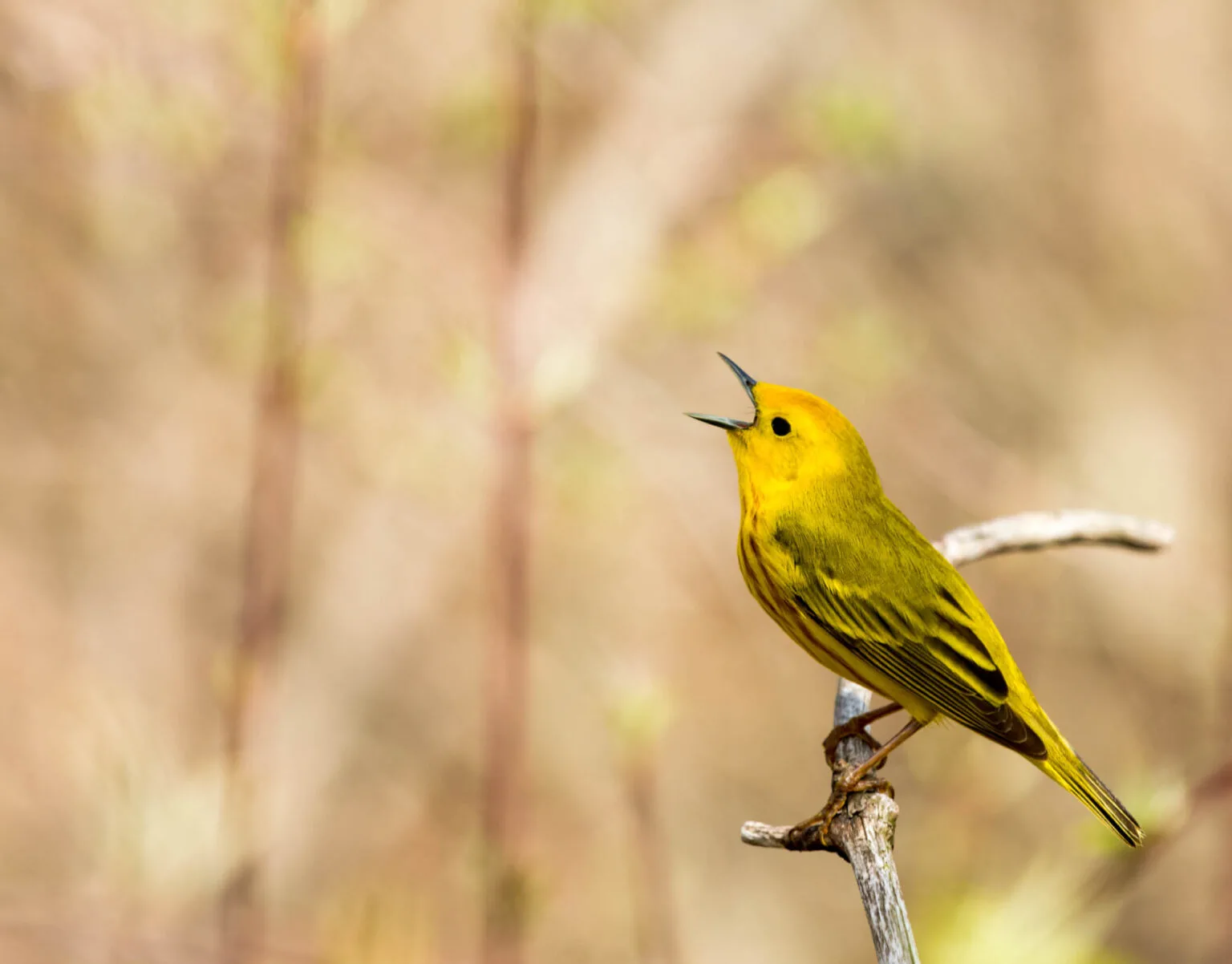
The Yellow Warbler is a small, bright yellow bird found across North America. It likes places near water and eats insects. A cool thing about it is when a cowbird lays eggs in its nest, the warbler builds more layers on top to protect its own eggs. People love seeing and hearing these cheerful yellow birds.
23. Yellow Asian Golden Weaver
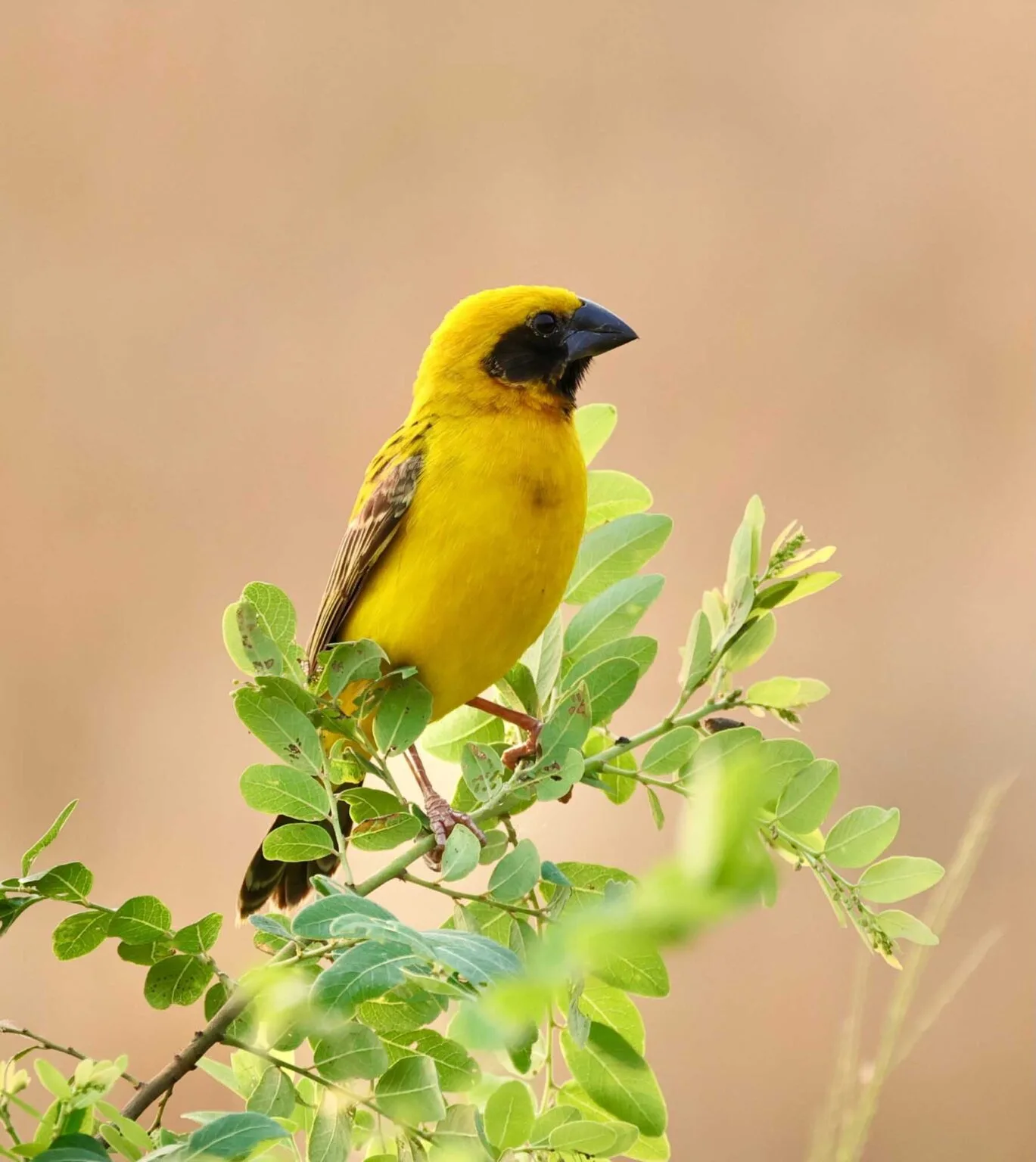
The Asian Golden Weaver is a striking bird, known for its vibrant yellow plumage, especially in males during the breeding season. Native to Southeast Asia, these birds are named for their unique nesting technique; males weave intricate nests from blades of grass to attract females. This bird’s bright color and fascinating nesting habits make it a notable species among bird enthusiasts.
24. Yellow Carolina Jessamine
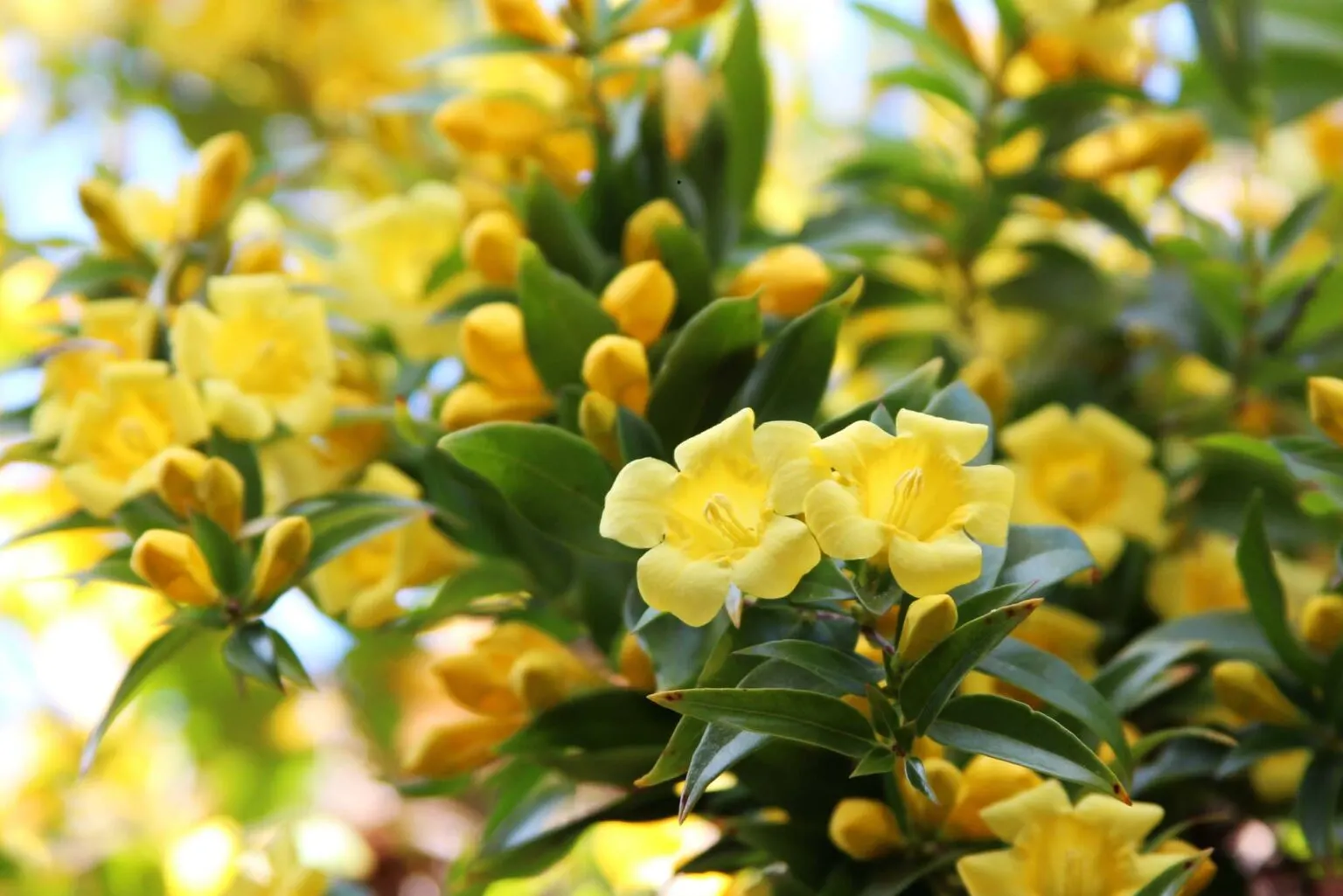
The Carolina Jessamine is a yellow-flowered vine from the southeastern US, known for its sweet-smelling, trumpet-shaped flowers. It blooms early in the year, adding color when most plants don’t. However, it’s important to know that every part of this pretty plant is poisonous if eaten. It’s easy to grow in different light conditions and keeps its green leaves all year, making it a favorite for decorating outdoor spaces.
25. Yellow Chicks
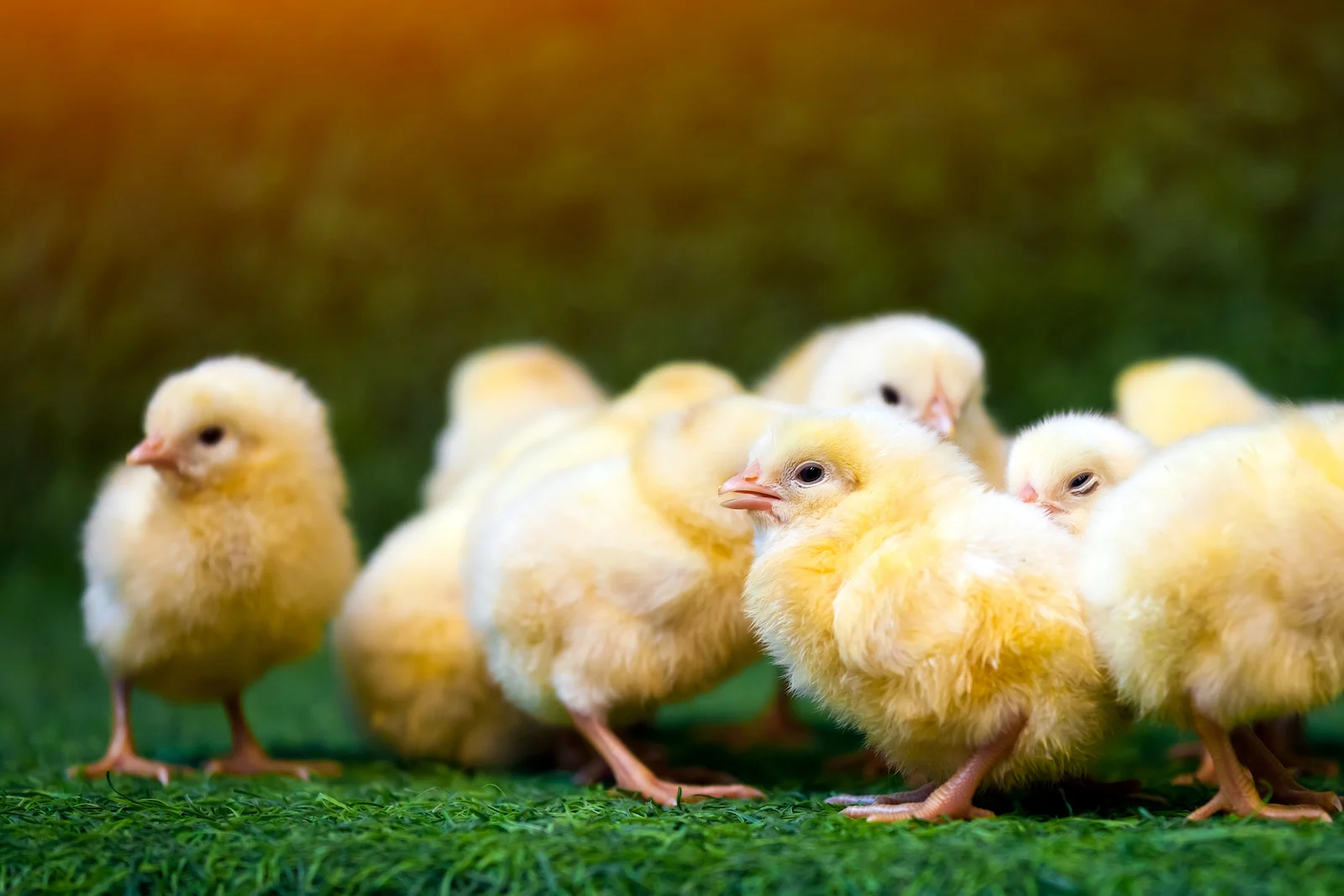
Yellow chicks, often associated with spring and new beginnings, are young chickens that are covered in soft, fluffy yellow down. This yellow color is especially common in baby chickens bred for egg and meat production, making them a familiar and adorable sight. These little birds are known for their curious and playful nature, quickly learning to peck for food and follow their mother hen or caretaker for warmth and protection.
26. Yellow Citrine Uncut Stones
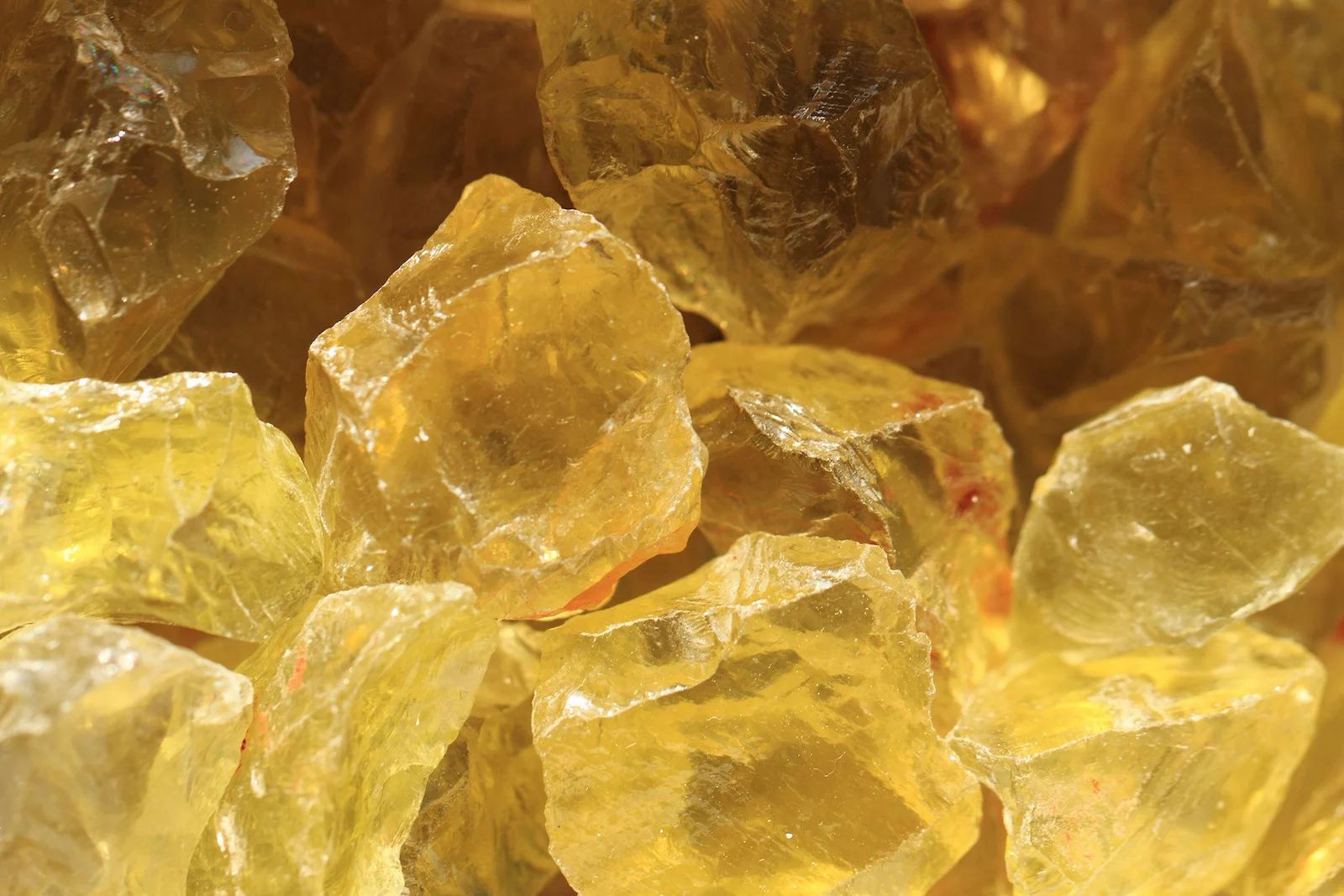
Yellow Citrine, uncut, appears as rough, translucent stones that glow with a warm yellow-to-orange hue, resembling the sun. Citrine is a form of quartz and is cherished not just for its beauty but also for its supposed metaphysical properties, such as attracting wealth and positivity.
27. Yellow Cockatiel Bird
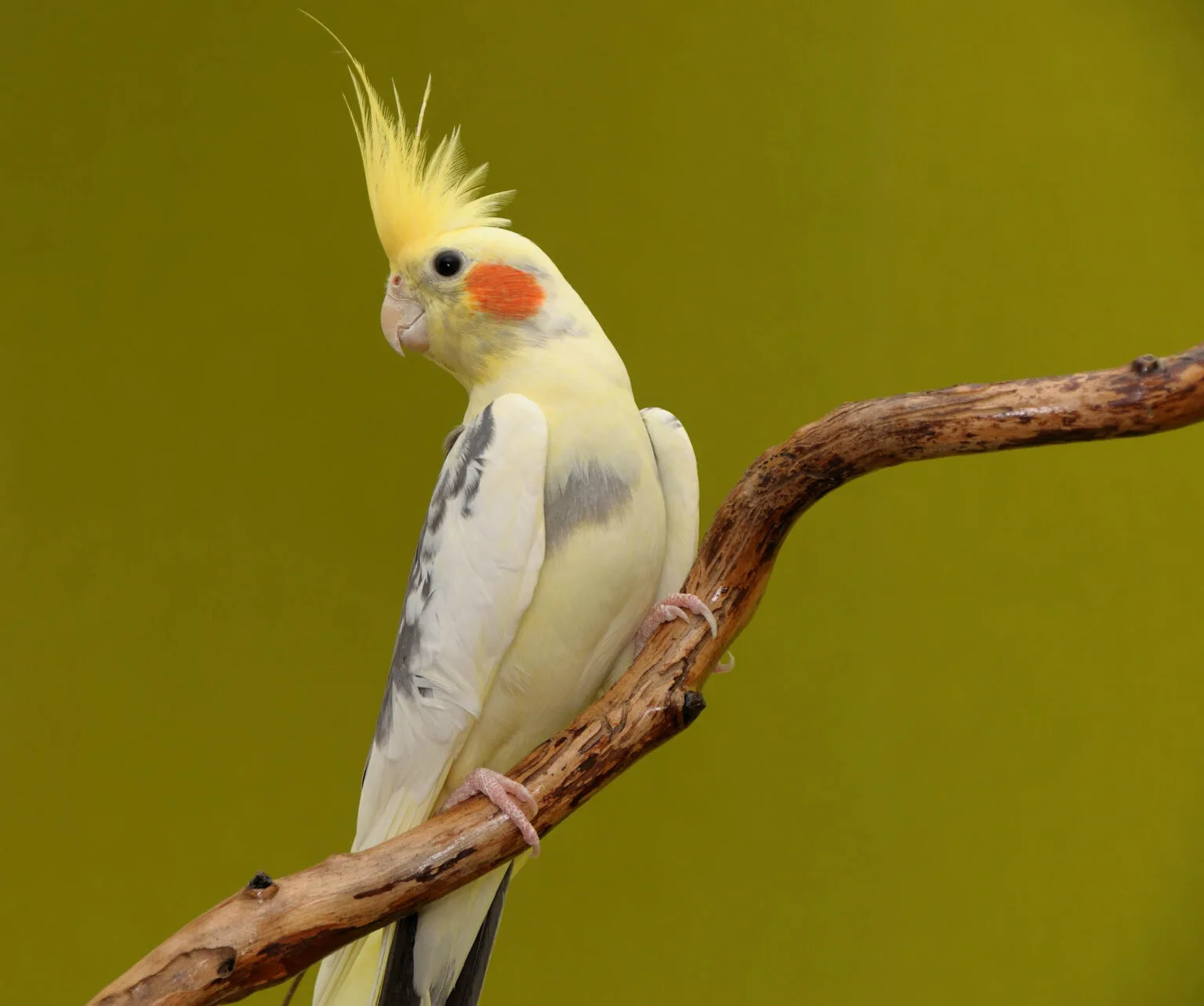
The Yellow Cockatiel, a variant of the cockatiel (Nymphicus hollandicus), is known for its striking yellow plumage, often highlighted with orange cheek patches and a mix of gray or white on its wings and back. Originating from Australia, these birds are highly sociable and intelligent, making them popular pets around the world.
28. Yellow Craspedia Flower
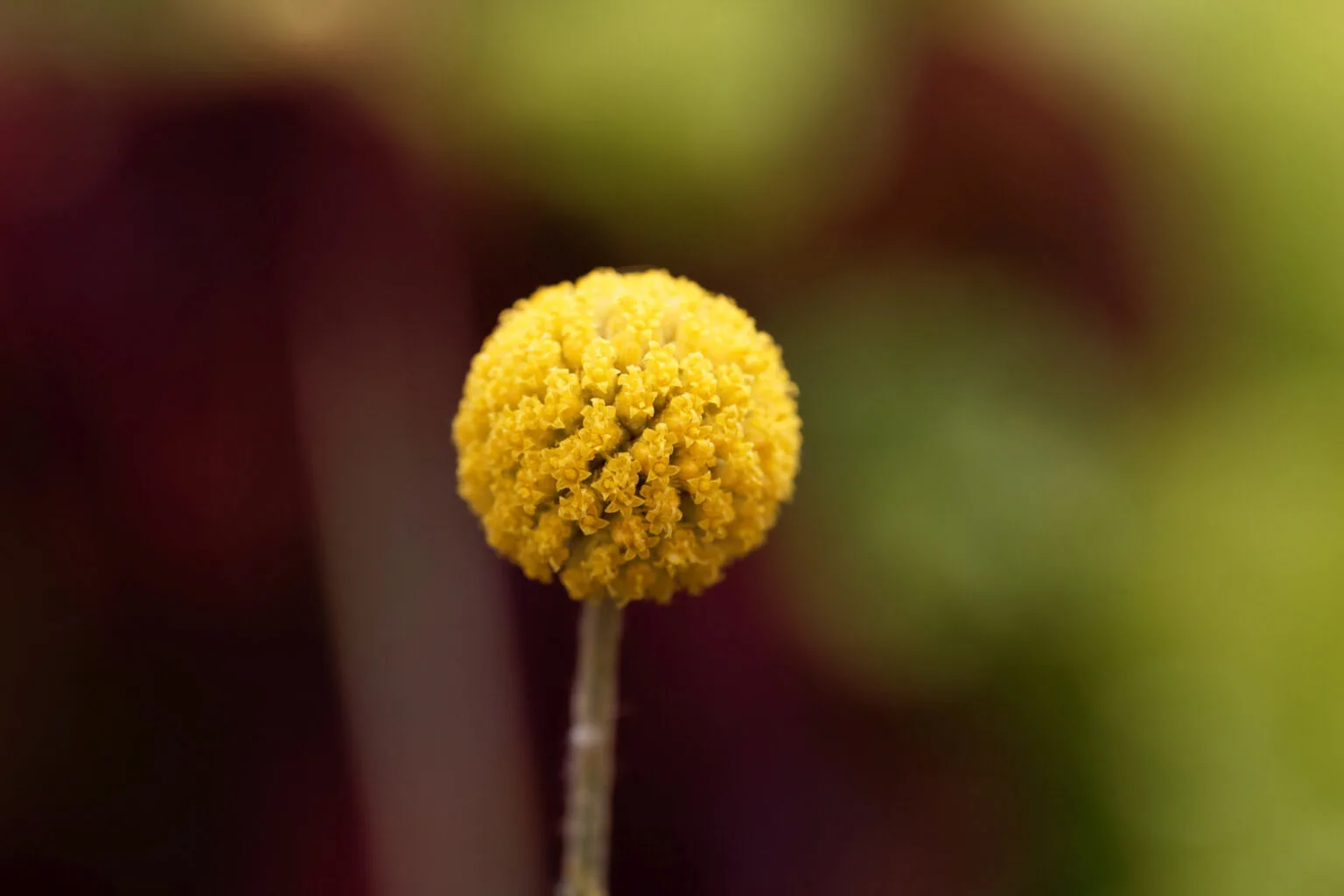
The yellow craspedia flower, also known as Billy Button or Woollyhead, is a small, spherical flower that boasts a bright, sunny yellow color. Native to Australia and New Zealand, these flowers stand out for their unique shape and vibrant hue, making them a popular choice in both fresh and dried floral arrangements.
29. Yellow Dahlia Flower
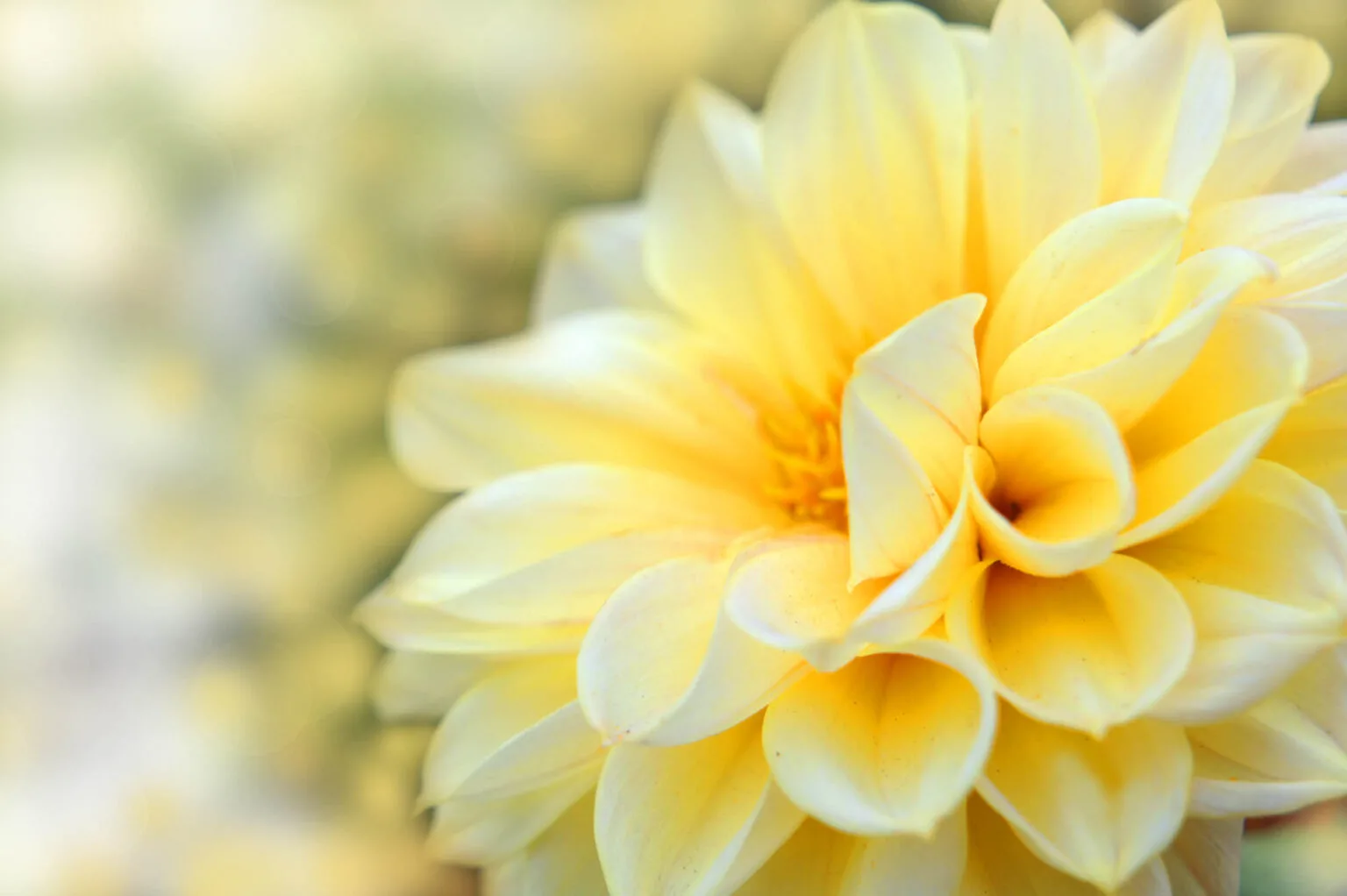
The Yellow Dahlia Flower is a stunning bloom that comes in various shades of yellow, from pale lemon to deep gold, adding a vibrant splash of color to gardens and bouquets. Dahlias are known for their intricate petals and wide range of sizes, making them a favorite among gardeners and florists alike.
30. Yellow Dandelions
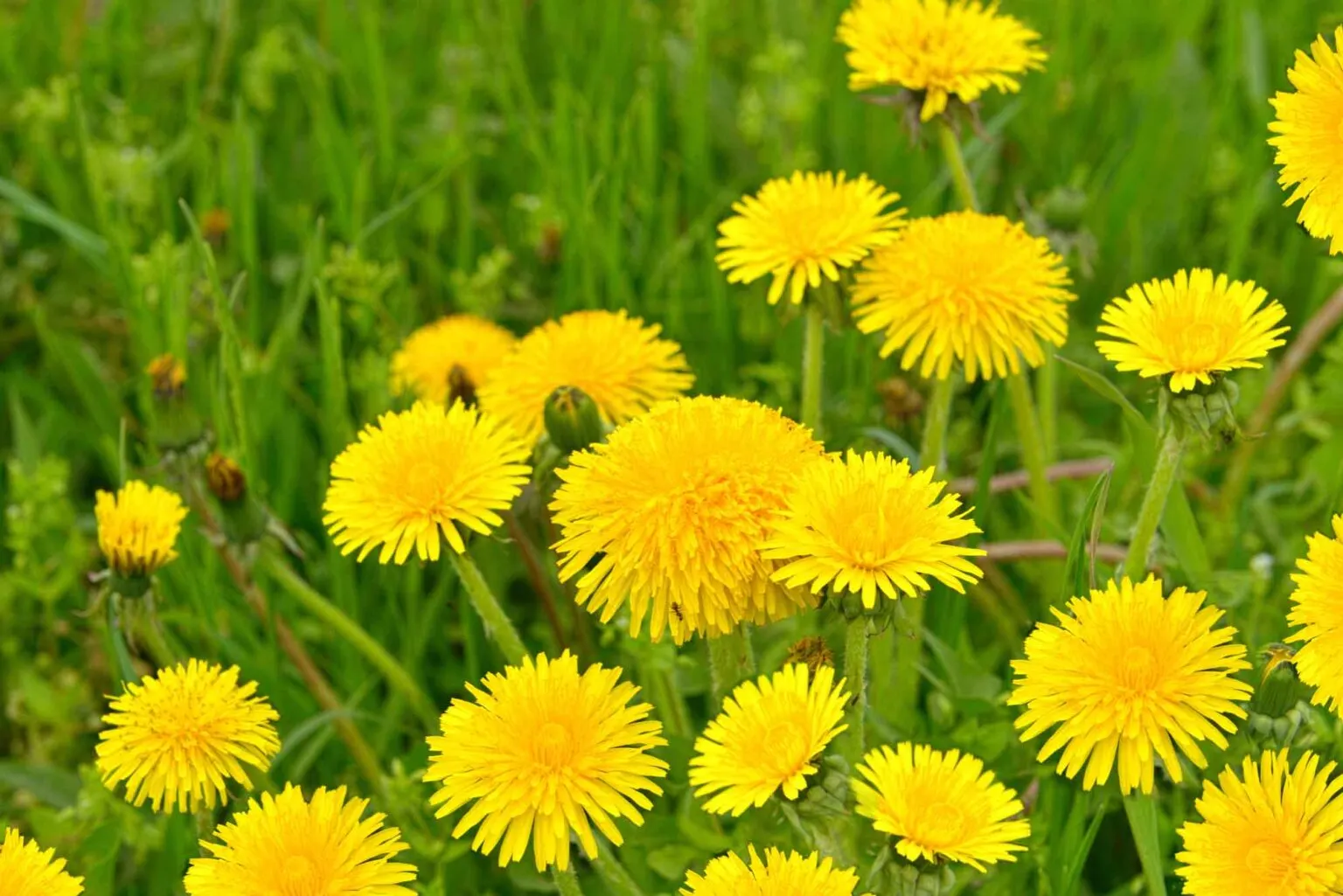
Yellow dandelions, with their bright, cheerful blooms, are often one of the first signs of spring. Known scientifically as Taraxacum officinale, they are common worldwide and can thrive in a variety of environments, making them both loved and considered a weed.
31. Yellow Daylily Flower
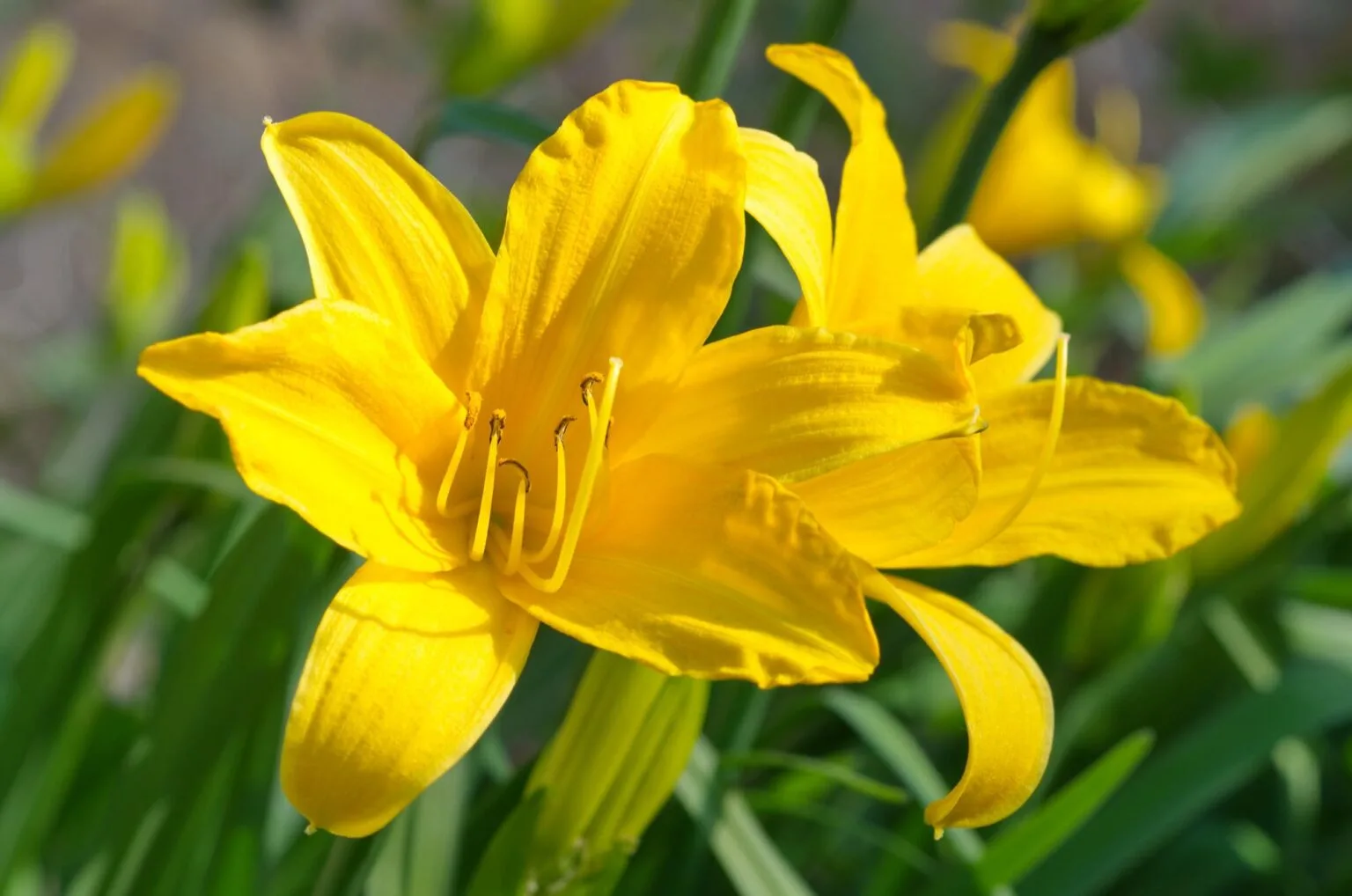
The Yellow Daylily, known scientifically as Hemerocallis, is a popular perennial plant that showcases vibrant yellow blooms. These flowers are known for their striking beauty and the fact that each bloom lasts for just one day, with new flowers blooming to take their place throughout the flowering season. Daylilies are extremely hardy and low-maintenance, making them a favorite among gardeners for adding a splash of color to landscapes.
32. Yellow Dragon Fruit
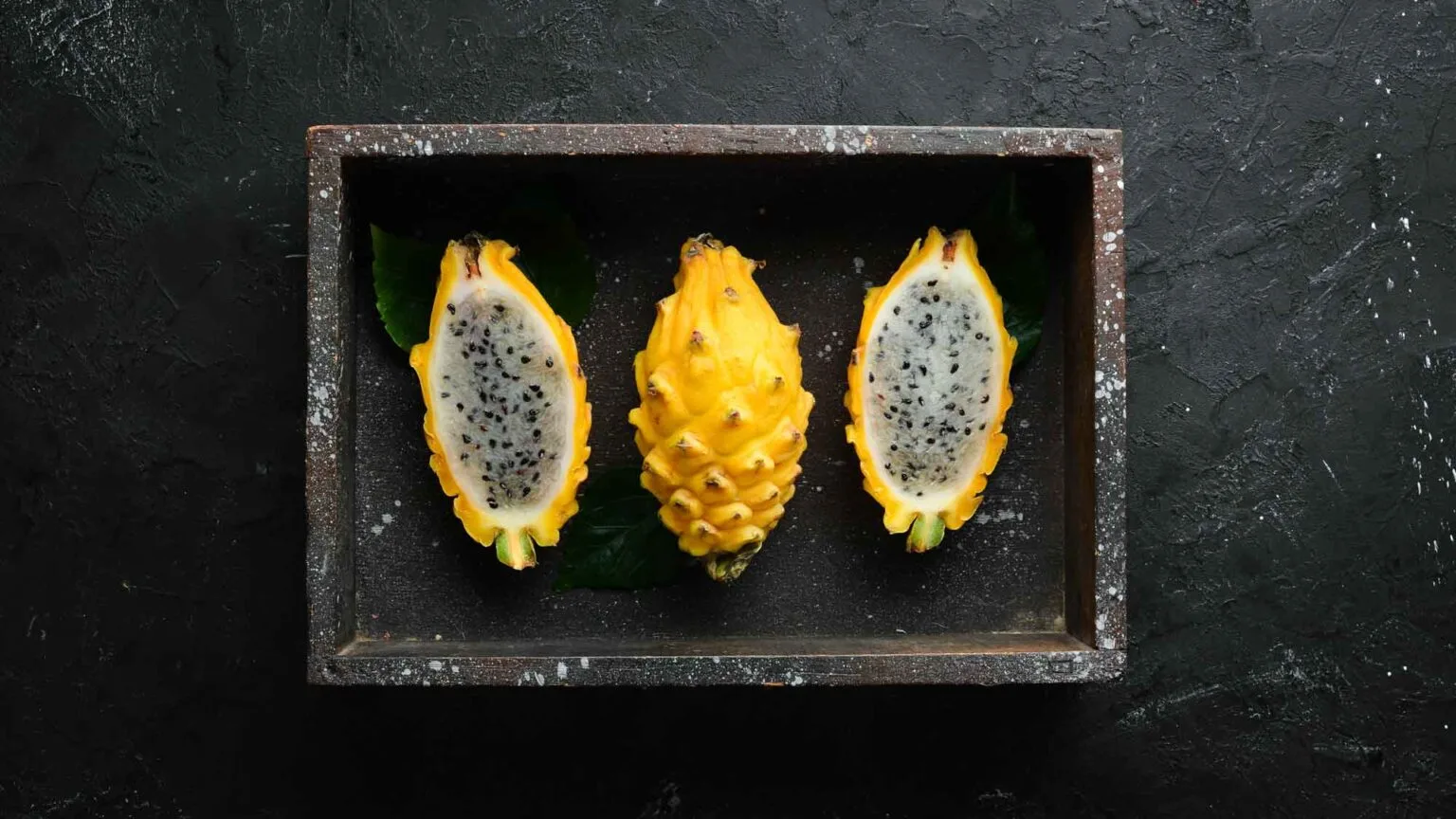
The Yellow Dragon Fruit is a bright yellow fruit with a sweet white inside and tiny seeds. It comes from South America and is full of vitamins and good for your health. It’s sweeter than the red kind and grows on cactus plants from big flowers that open at night. You can eat it by cutting it open and scooping out the inside, adding a yummy tropical flavor to snacks and drinks.
33. Yellow Fig
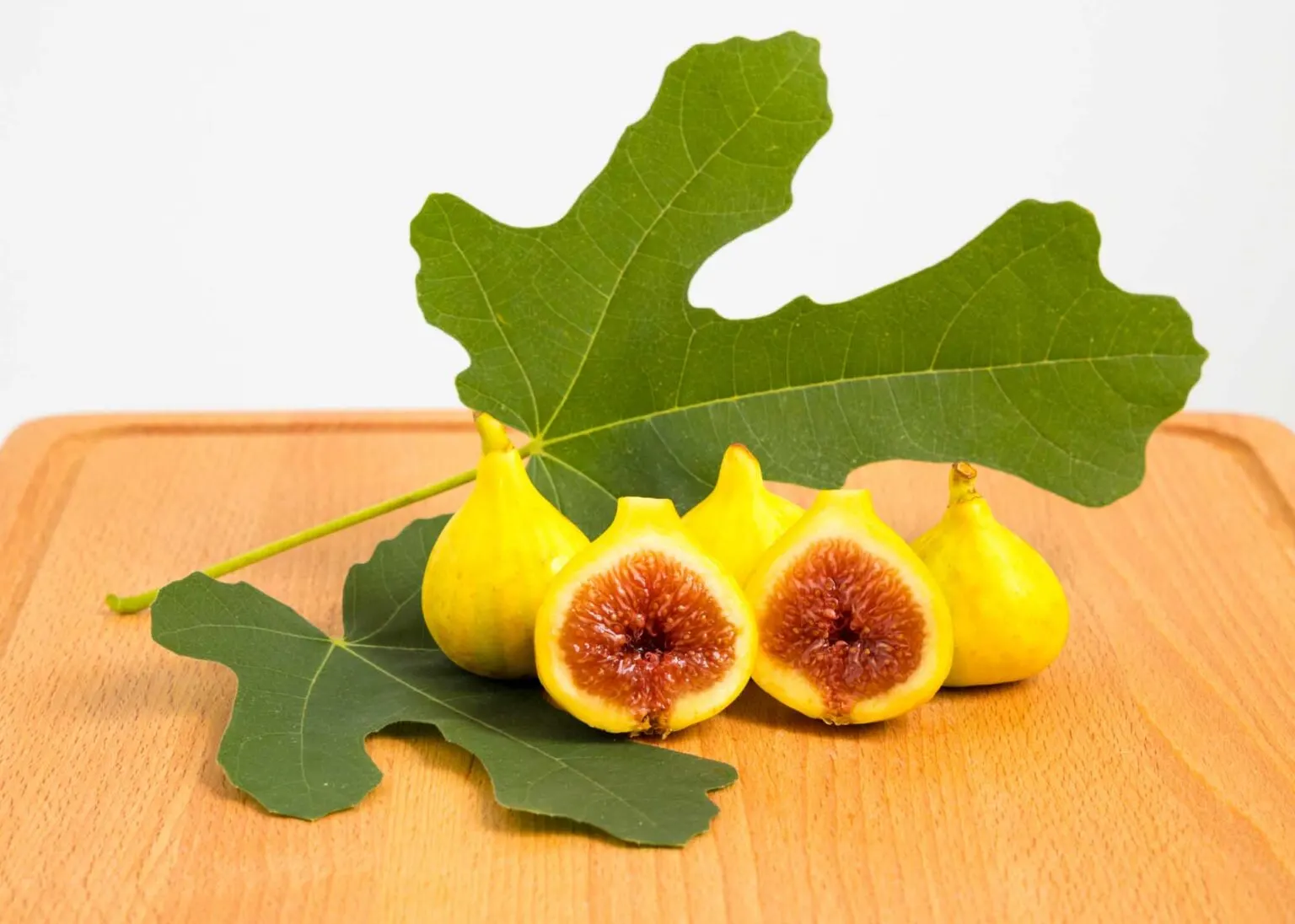
The Yellow Fig is a type of fig fruit that has a yellow or golden outer skin and a soft, sweet interior. These figs are known for their delicious, juicy flavor and are often eaten fresh, dried, or used in cooking and baking. Yellow figs are rich in nutrients, including fiber, vitamins, and minerals, making them a healthy addition to any diet.
34. Yellow Ghost Crab
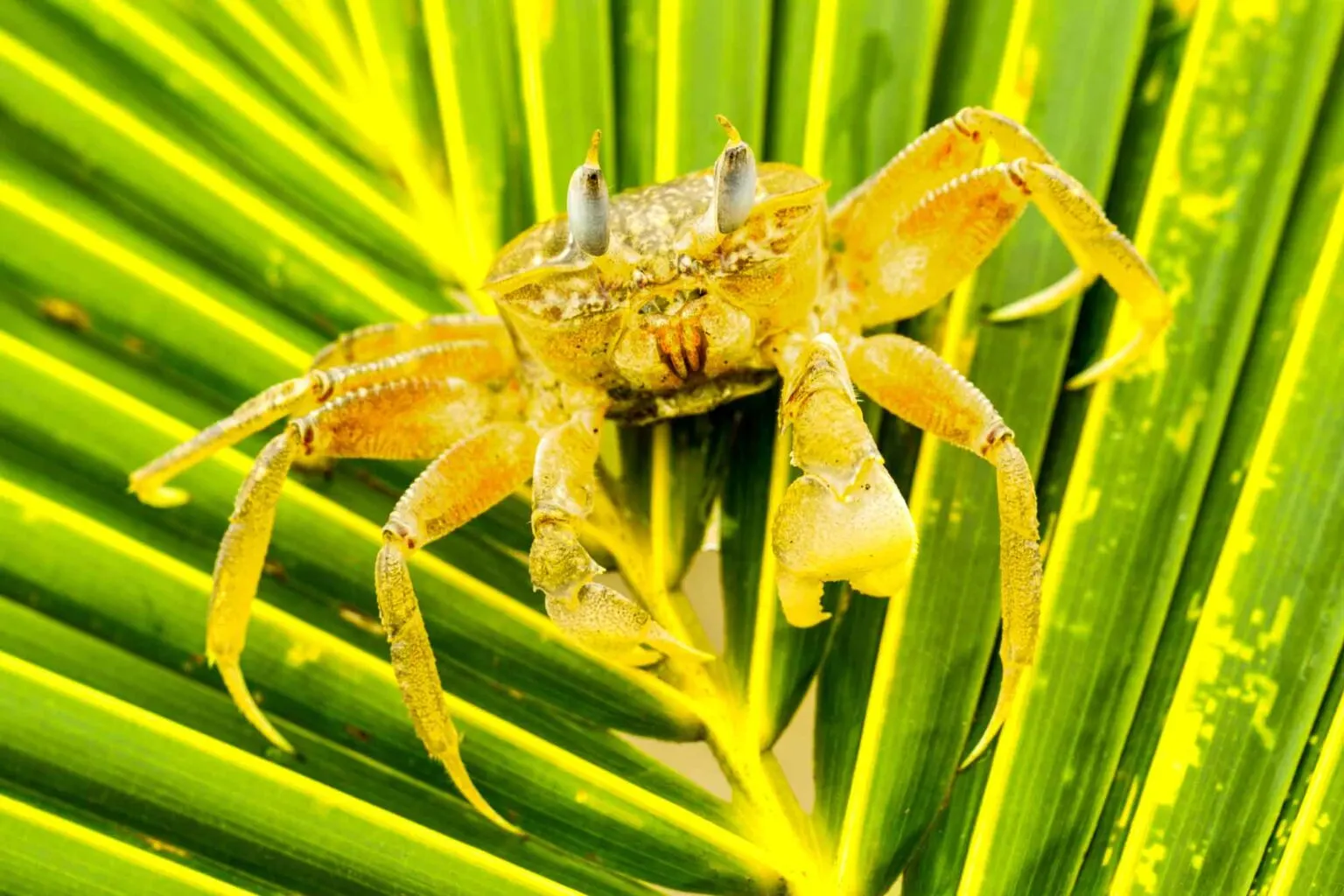
The Yellow Ghost Crab is a small, pale yellow crab that lives on beaches. It’s fast and moves around mostly at night, which is why it’s called “ghost.” These crabs can make a bubbling sound to “talk.” They help the beach by eating leftovers and making holes in the sand that let air in, helping other creatures too.
35. Yellow Gold Kiwi
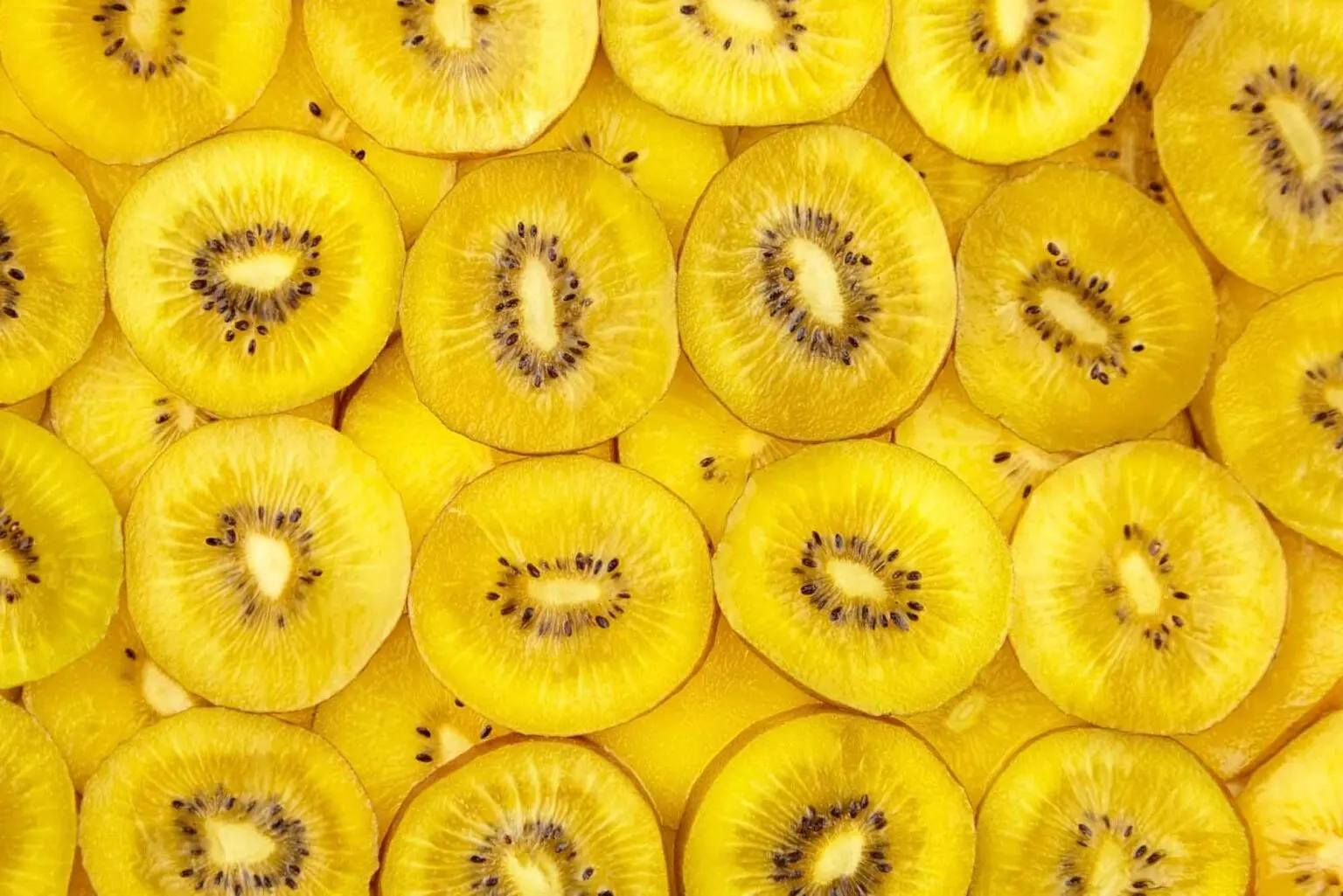
The Yellow Gold Kiwi has bronze skin and bright yellow inside. It tastes sweeter than green kiwis, kind of like mango and melon. It’s full of vitamins and good for health. This kiwi came from mixing different types to make it tastier and healthier. You can eat it alone, in fruit salads, or in smoothies.
36. Yellow Golden Apple Snails
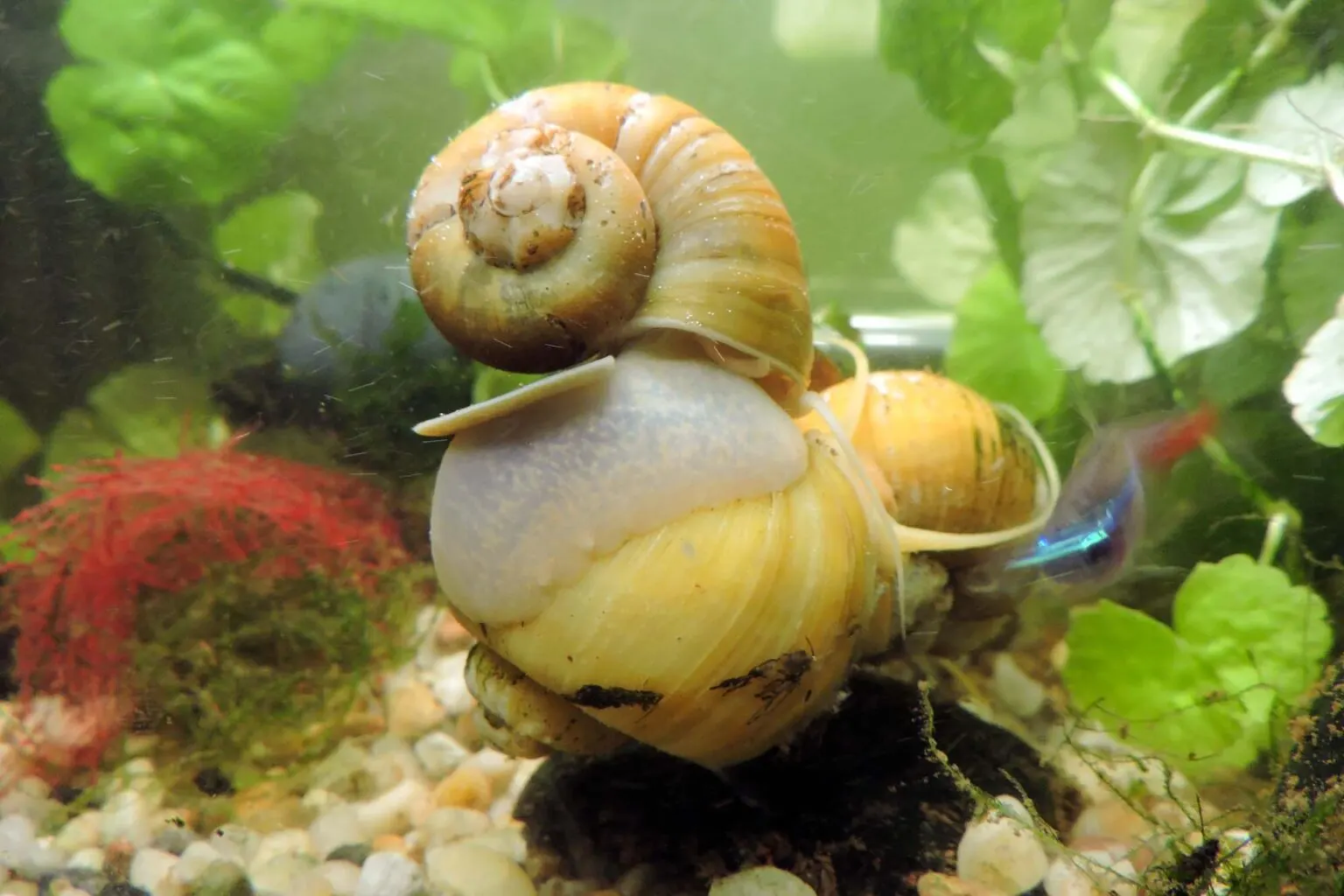
The Yellow Golden Apple Snail has a bright yellow shell and is often kept in aquariums for its looks. Originally from South America, it’s now a problem in many places because it eats a lot of plants and harms crops like rice. These snails are unique because they can breathe in water and air, which helps them live in many environments. However, their fast breeding makes them a big challenge outdoors.
37. Yellow Golden Palm Weaver Bird
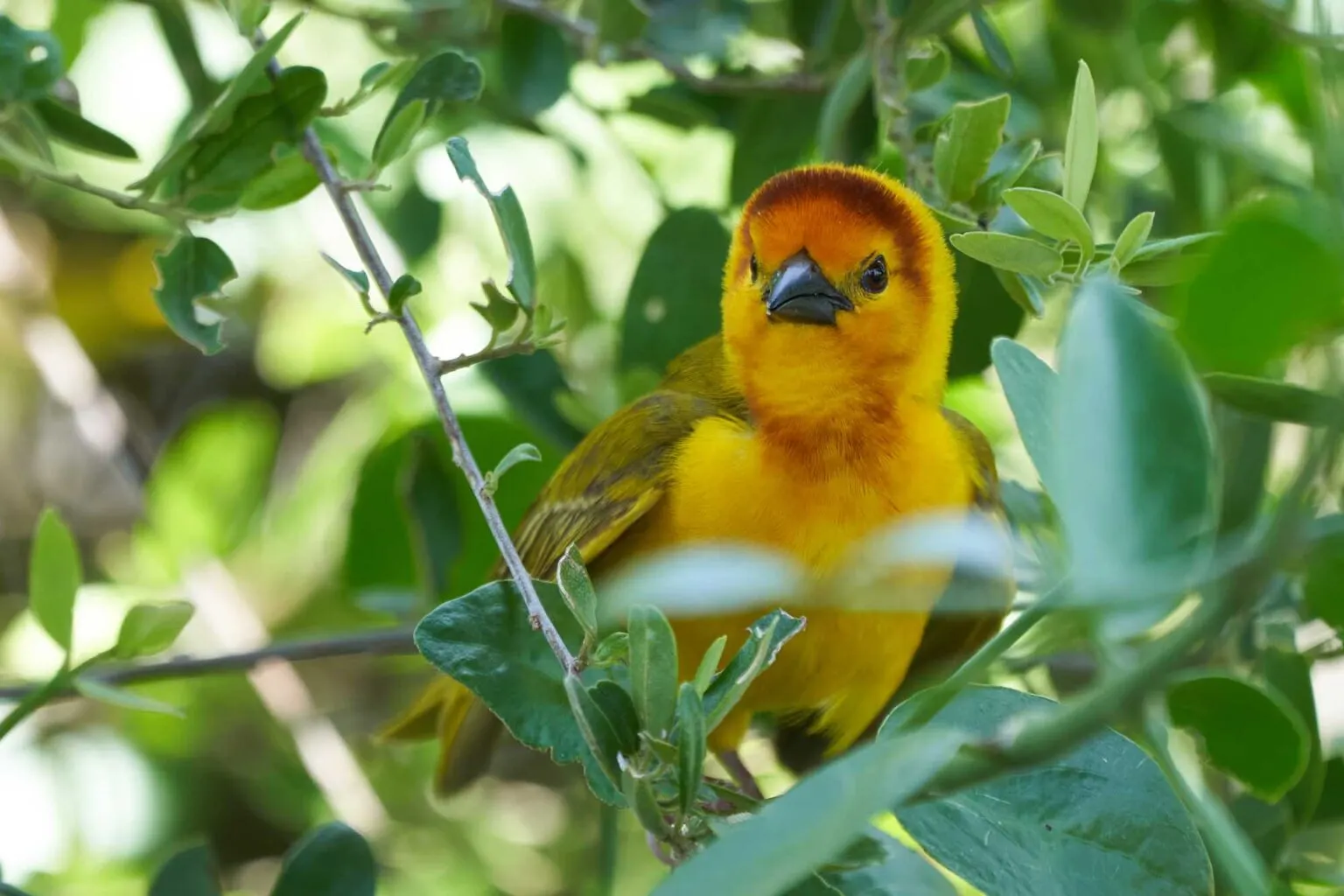
The Golden Palm Weaver bird, known for its vibrant yellow plumage, is a small bird native to the coastal regions of Eastern Africa. These birds are named after their skillful weaving of nests, which they construct using leaves and fibers, often hanging from palm trees.
38. Yellow Golden Retriever

The Yellow Golden Retriever is a beloved dog breed known for its friendly, gentle temperament and beautiful golden coat that ranges in shade from light cream to rich gold. Originally bred for retrieving game in hunting, this breed is highly intelligent, making it excellent for roles such as guide dogs, search-and-rescue, and in therapy.
39. Yellow Goldenrod Crab Spider
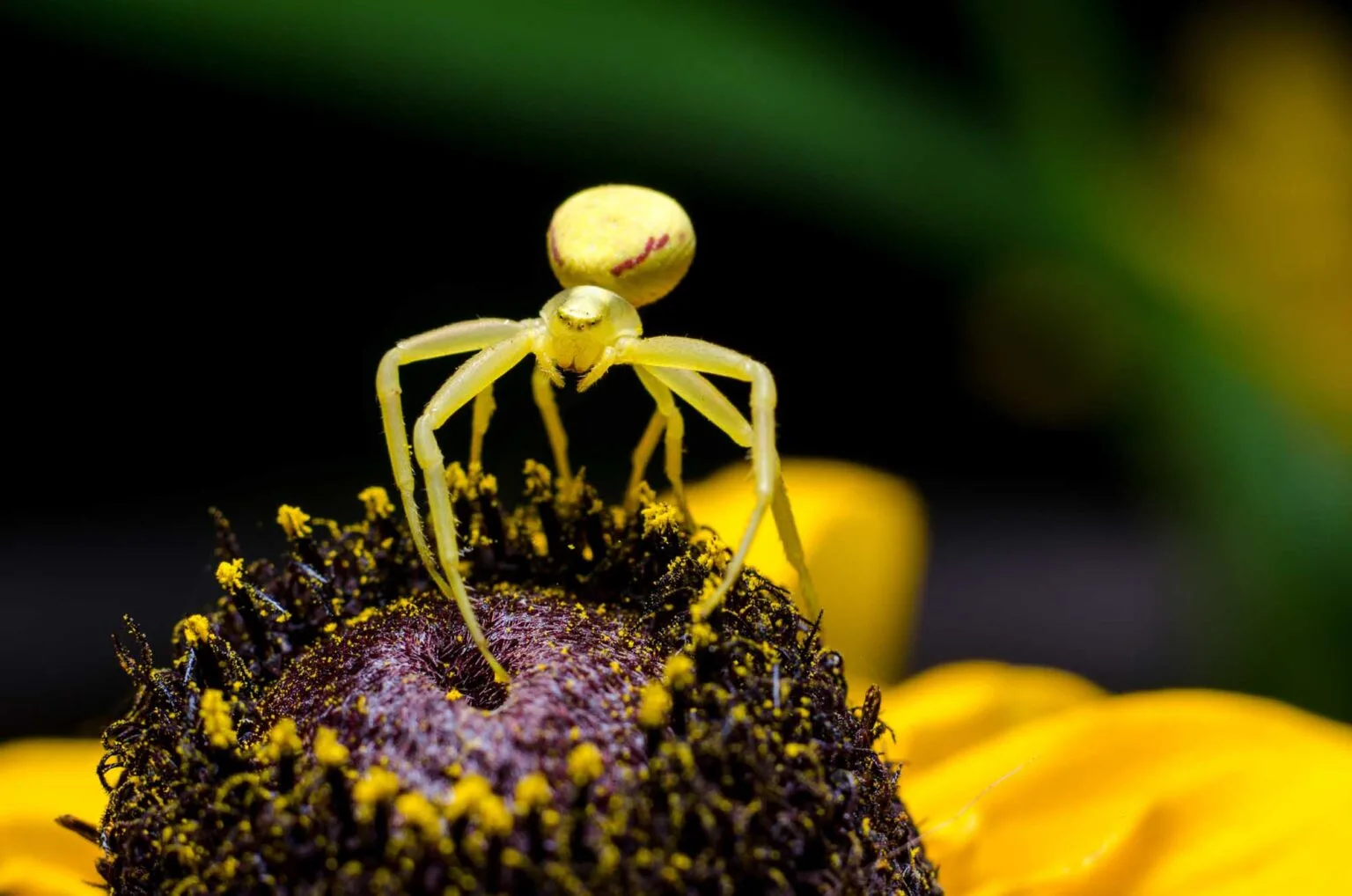
The Yellow Goldenrod Crab Spider can change color from yellow to white to hide on different flowers. It waits for insects like bees and butterflies to come close and then catches them quickly. This spider doesn’t make webs; instead, it uses its great hiding skills to surprise its prey. Having these spiders around is good for gardens because they help keep pest numbers down.
40. Yellow Hollyhock Flower
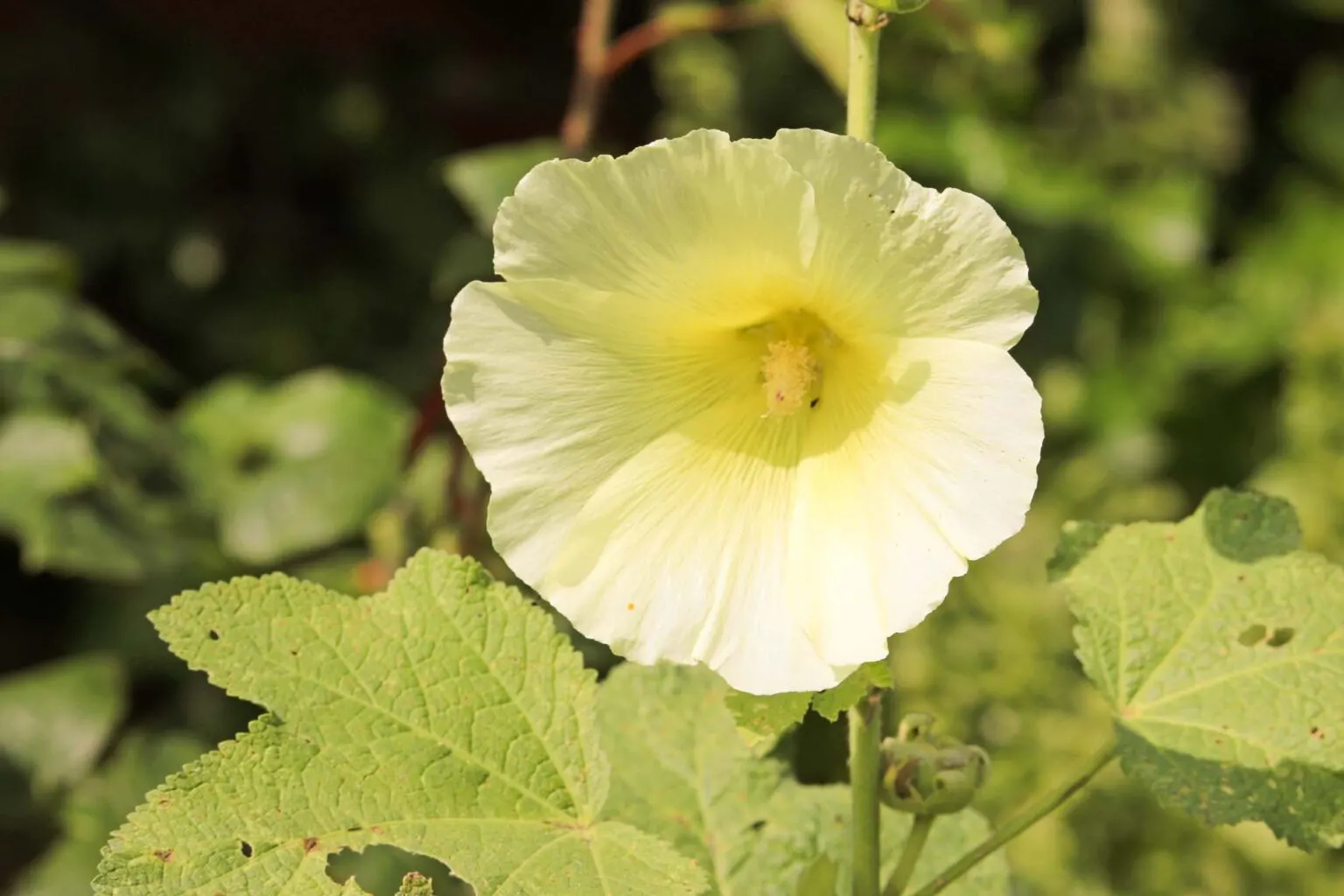
The Yellow Hollyhock is a striking flower known for its tall stalks and large, bright yellow blooms. These flowers are a favorite in gardens for adding height and color, often reaching up to 8 feet tall. Hollyhocks are easy to grow and bloom from mid-summer to fall, attracting pollinators like bees and butterflies.
41. Yellow Loquat Fruit
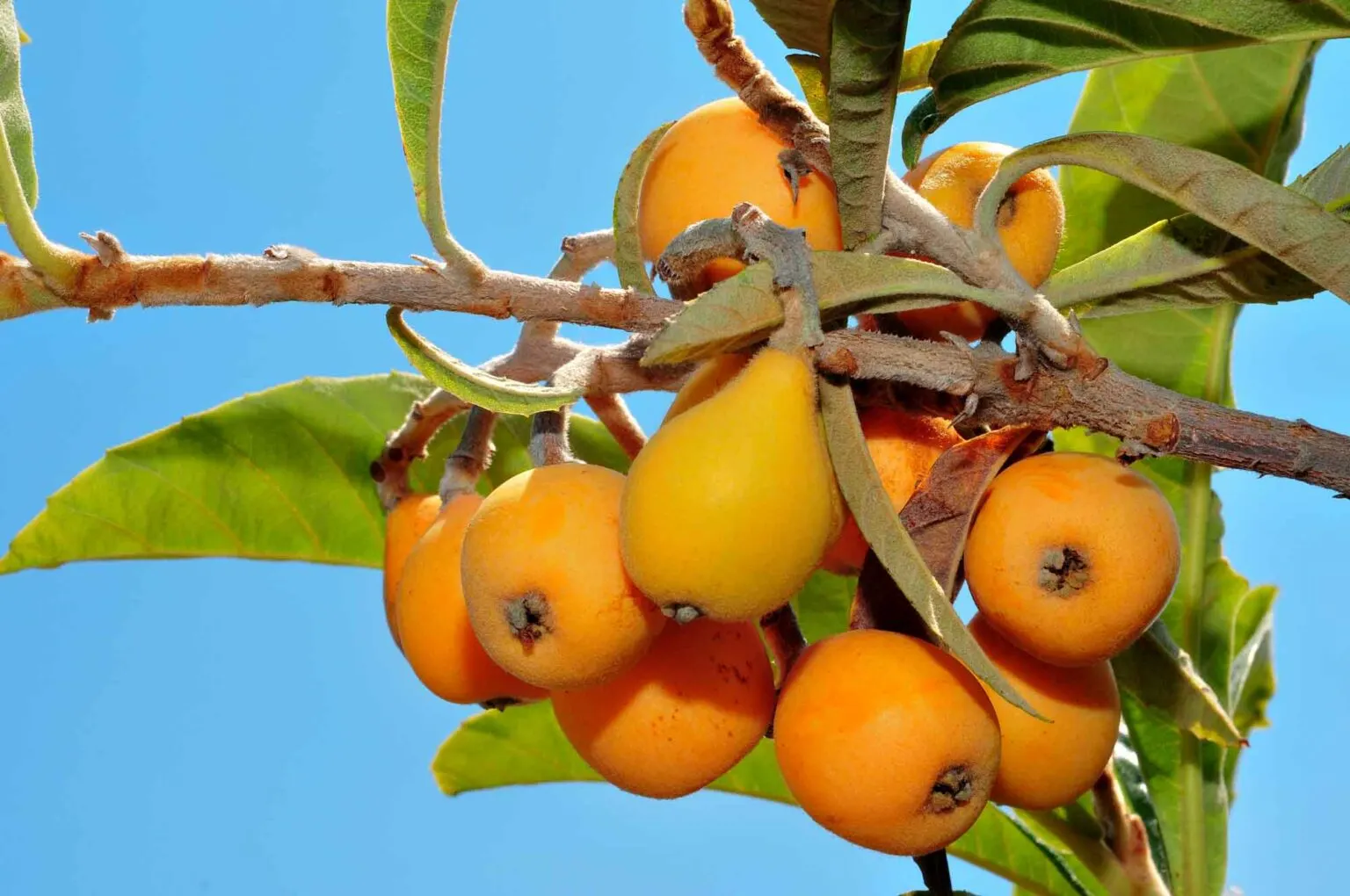
The Yellow Loquat is a sweet and tangy fruit with yellow skin, originally from Southeast China. It’s packed with vitamins and fiber and can be eaten fresh or used in jams and pies. A cool thing about loquats is they grow in late fall and winter, ripening in early spring, making them one of the first fruits ready to eat each year. This makes them an important early food source for both people and animals.
42. Yellow Melon
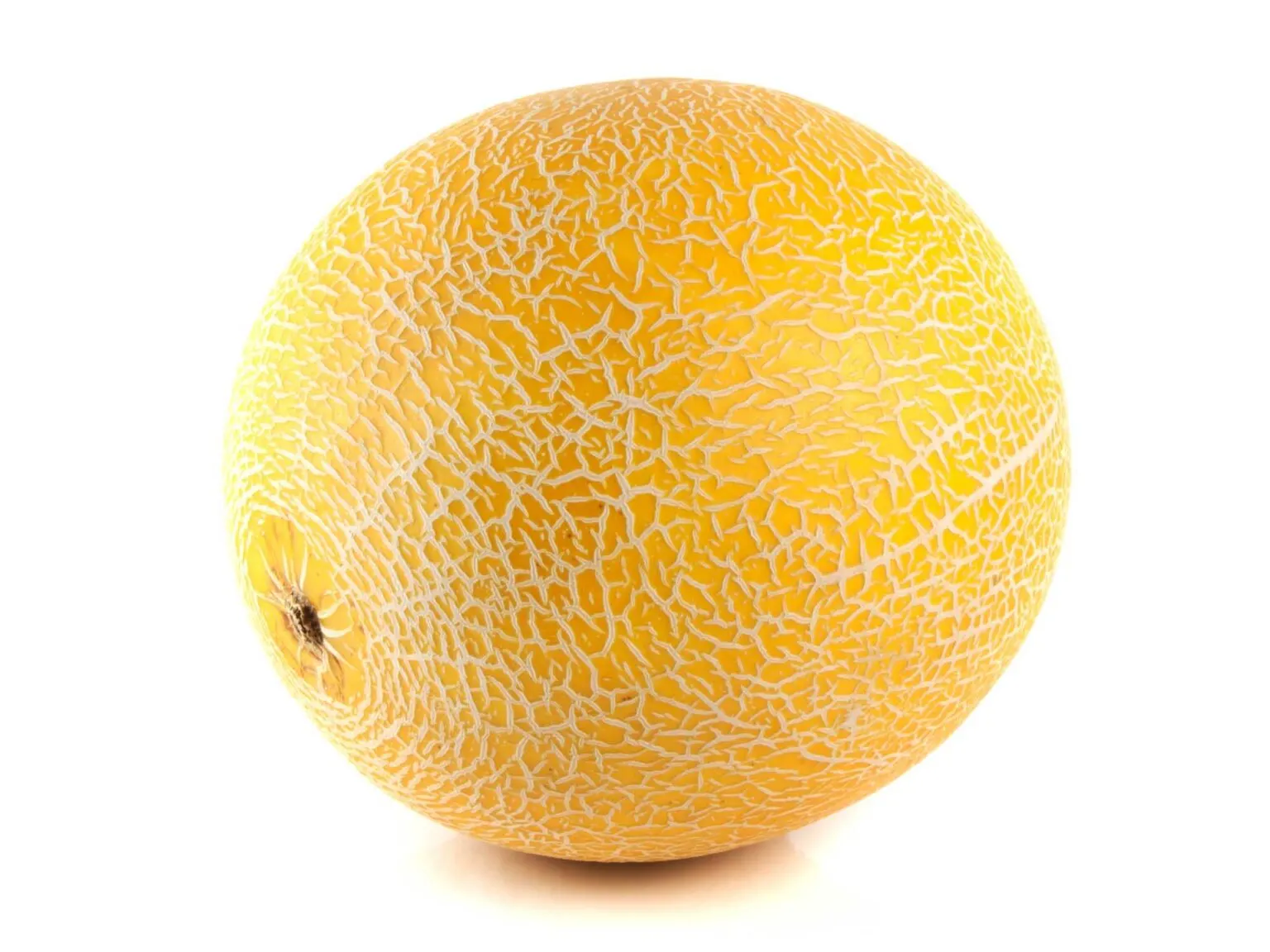
Yellow melon, also called Canary melon, is a sweet, bright yellow fruit with a hard skin and juicy inside. It’s full of vitamins and perfect for summer eating, in salads or drinks. Even though it’s called “winter melon,” it’s picked in summer but can last a long time. This melon is a tasty and healthy choice.
43. Yellow Potatoes
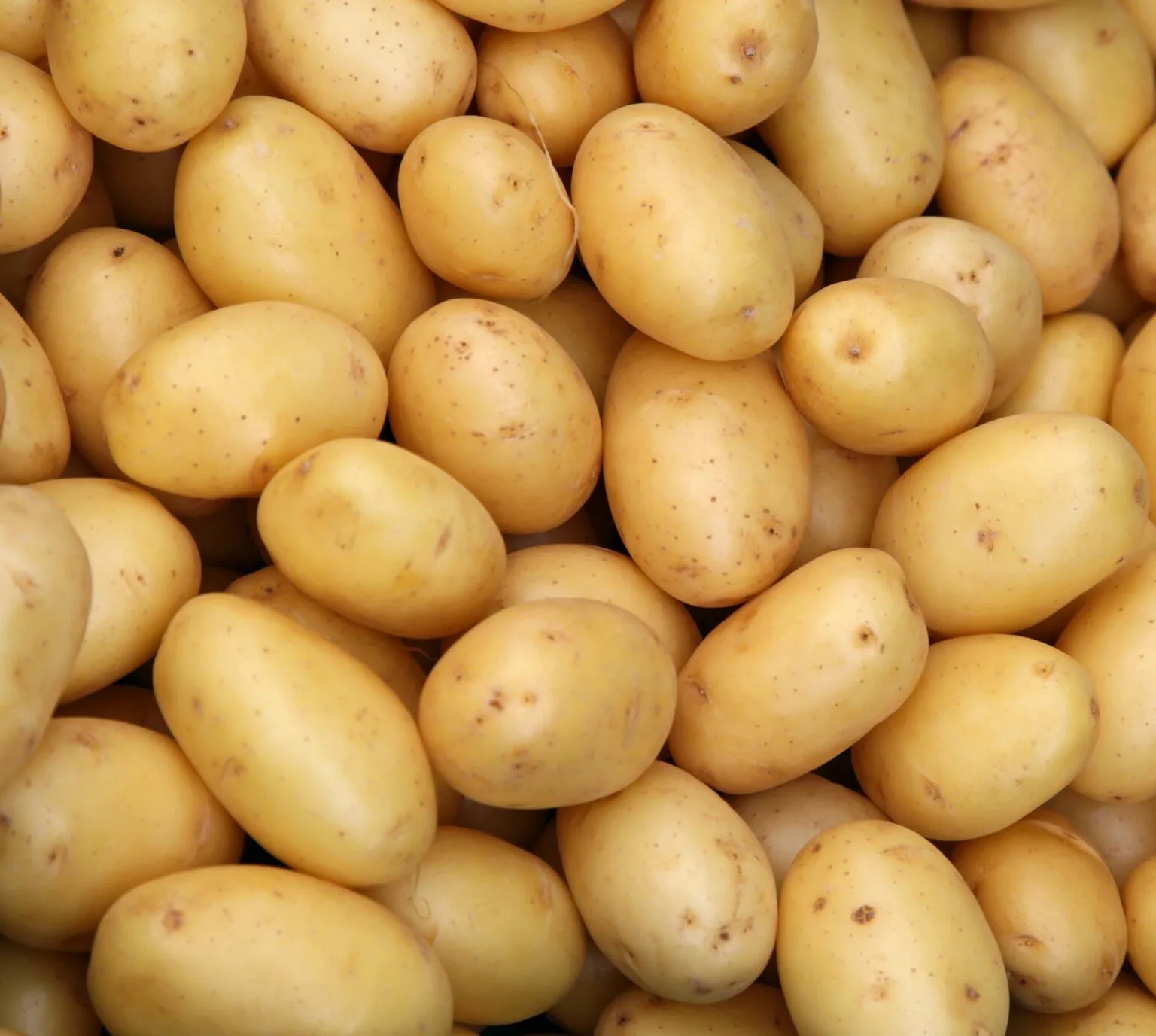
Yellow potatoes have golden skin and taste buttery. They’re good for cooking in different ways, like boiling or baking, because they stay firm but soft. They’re healthy, with lots of vitamins and fiber. Their natural creamy taste means you don’t need to add much butter or cream, making them a healthier choice.
44. Yellow Primrose Flower
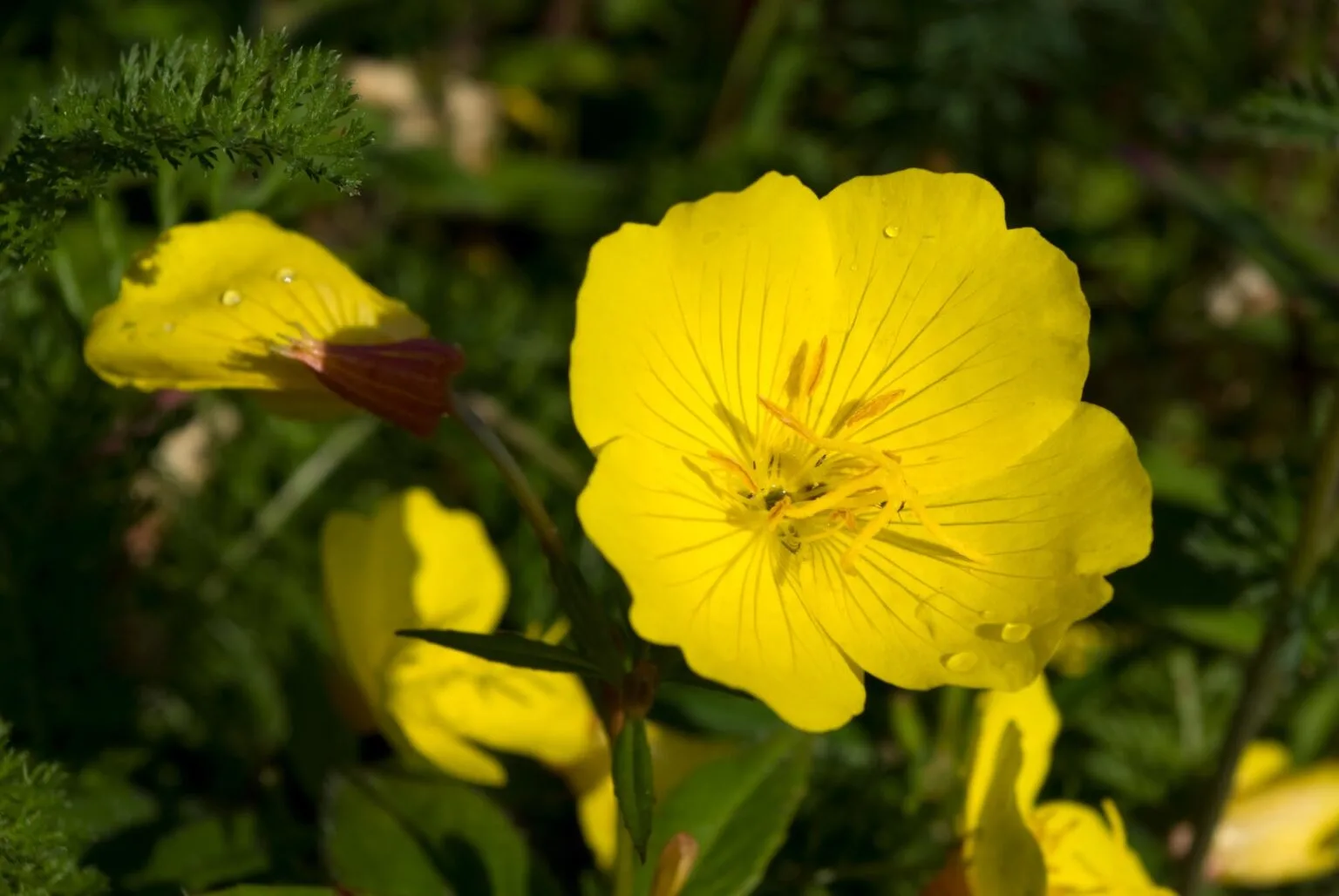
The yellow primrose flower is a bright and cheerful plant that blooms early in spring, often seen as one of the first signs of the season. With its vibrant yellow petals and sweet fragrance, it brings color and life to gardens after the winter. Primroses prefer cool temperatures and shaded areas, making them perfect for adding a splash of color to darker parts of the garden.
45. Yellow Red Mango
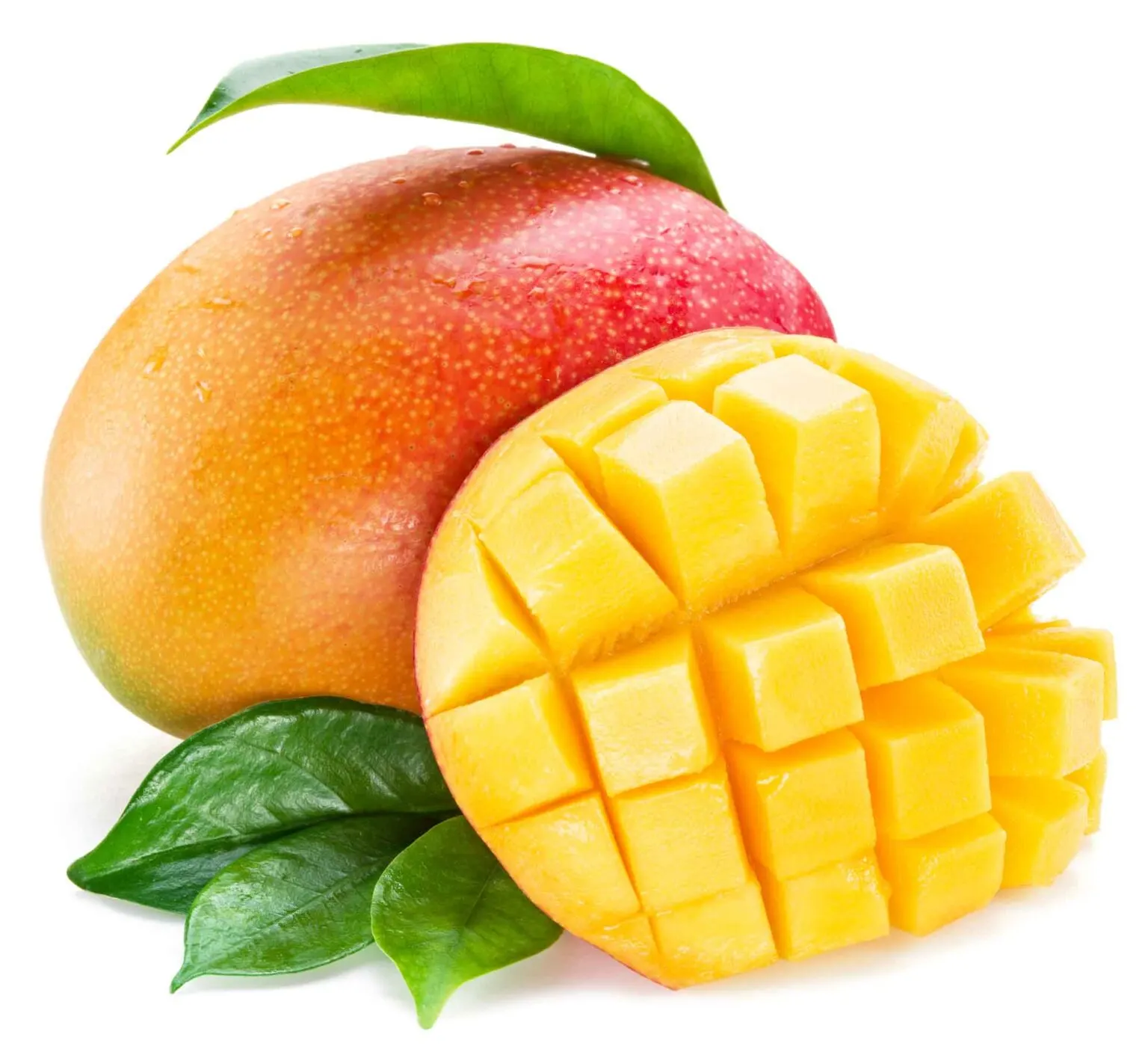
The Yellow Red Mango, often known as the “Honey Mango” or “Ataulfo Mango,” is a tropical fruit known for its smooth, yellow skin with blushes of red and its sweet, creamy flesh that lacks fibrous texture. This variety is smaller and somewhat kidney-shaped compared to other mangoes. Its buttery texture and sweet taste make it ideal for eating fresh, in salads, or for making smoothies and desserts.
46. Yellow Sweet Cherry
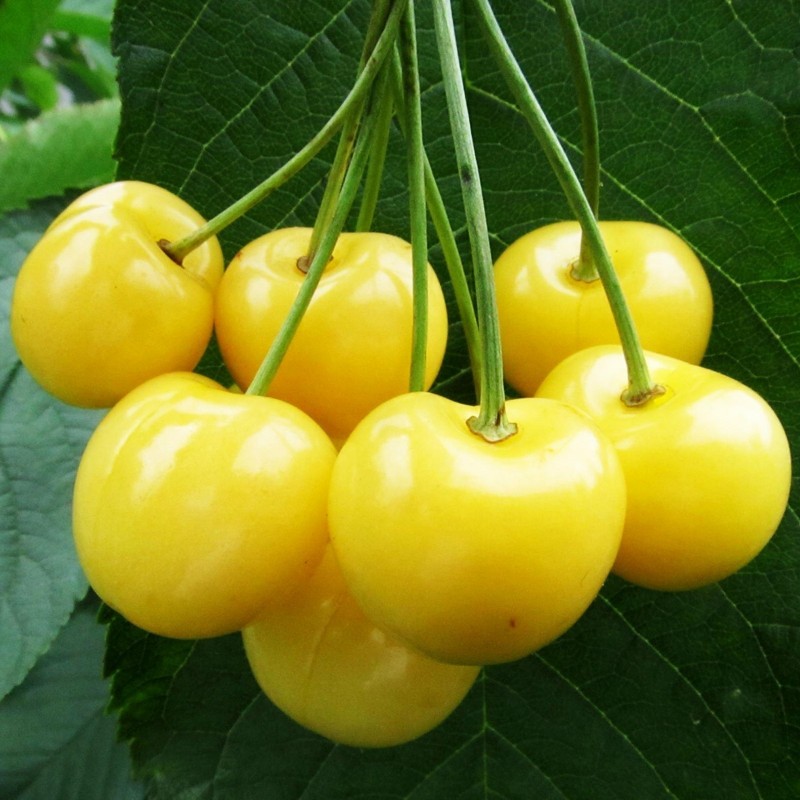
The Yellow Sweet Cherry, also called Rainier Cherry, is a special kind of cherry with yellow and red skin. It’s very sweet and juicy. These cherries are full of vitamins and good for you. They were first made in 1952 and are named after a mountain. They’re delicate but great for eating by themselves or in desserts and salads.
47. Yellow Throated Marten
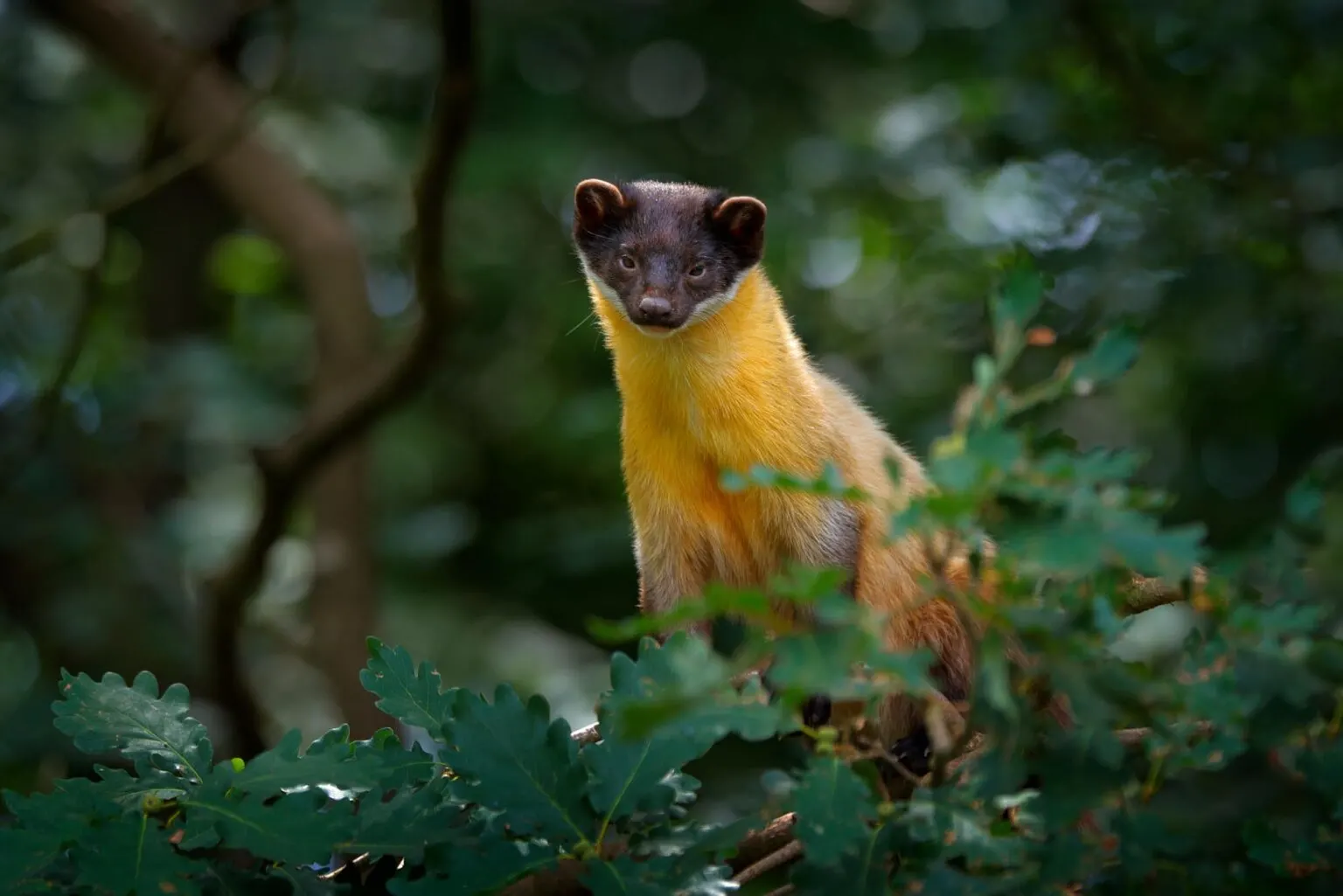
The Yellow-throated Marten is a colorful and lively animal found in Asian forests. It has a unique look with a yellow throat and dark fur. This animal eats fruits, birds, and small mammals, and is known for being very bold, even hunting in groups and taking on larger animals. It helps control rodent populations in its environment.
48. Yellow Tulips Bouquet
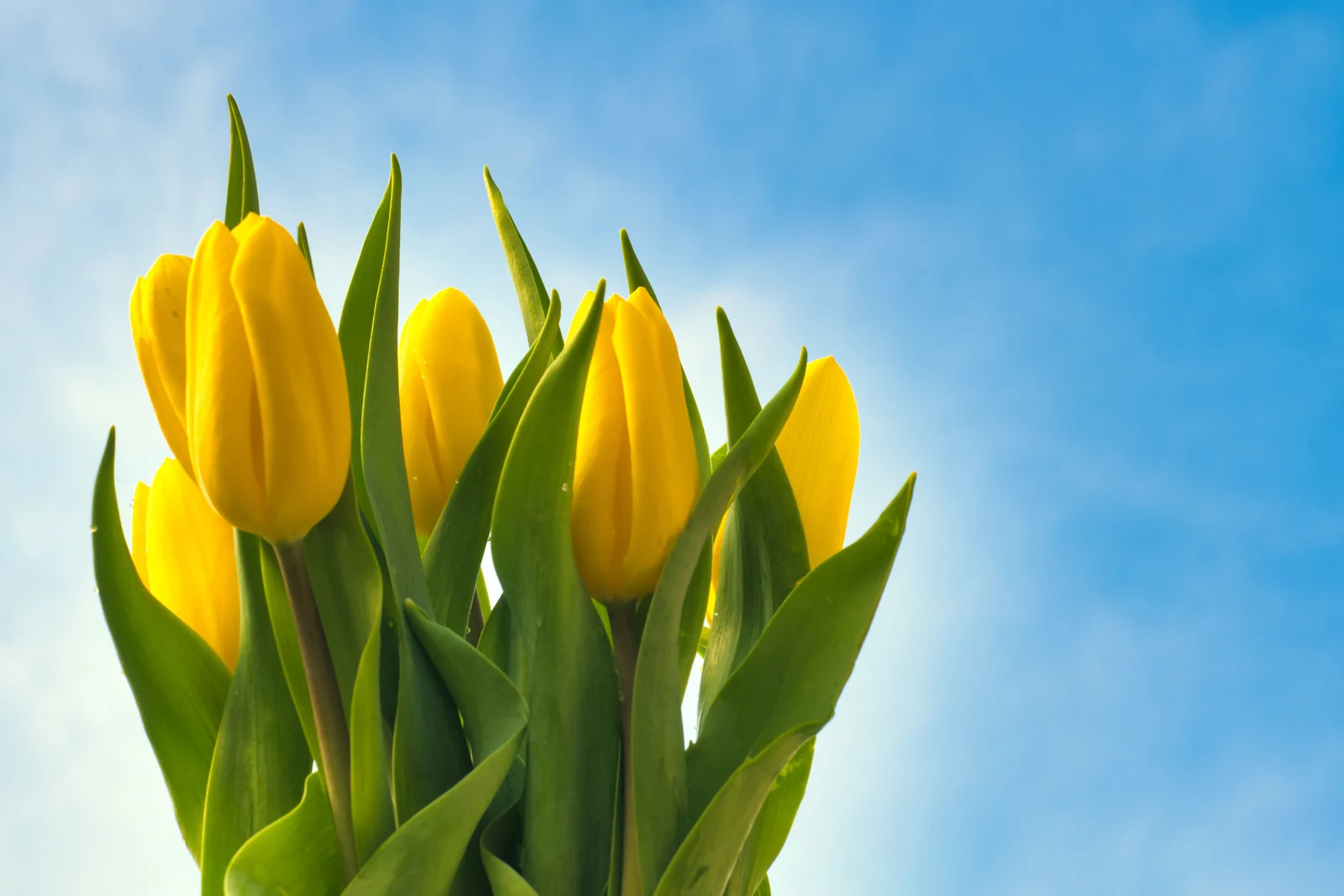
A Yellow Tulips Bouquet is a bright and cheerful arrangement that symbolizes happiness and sunshine. Yellow tulips are often given to express cheerful thoughts, friendship, and a sense of hope. They are popular in spring and bring a joyful vibe to any space.
49. Nosebleed Flower
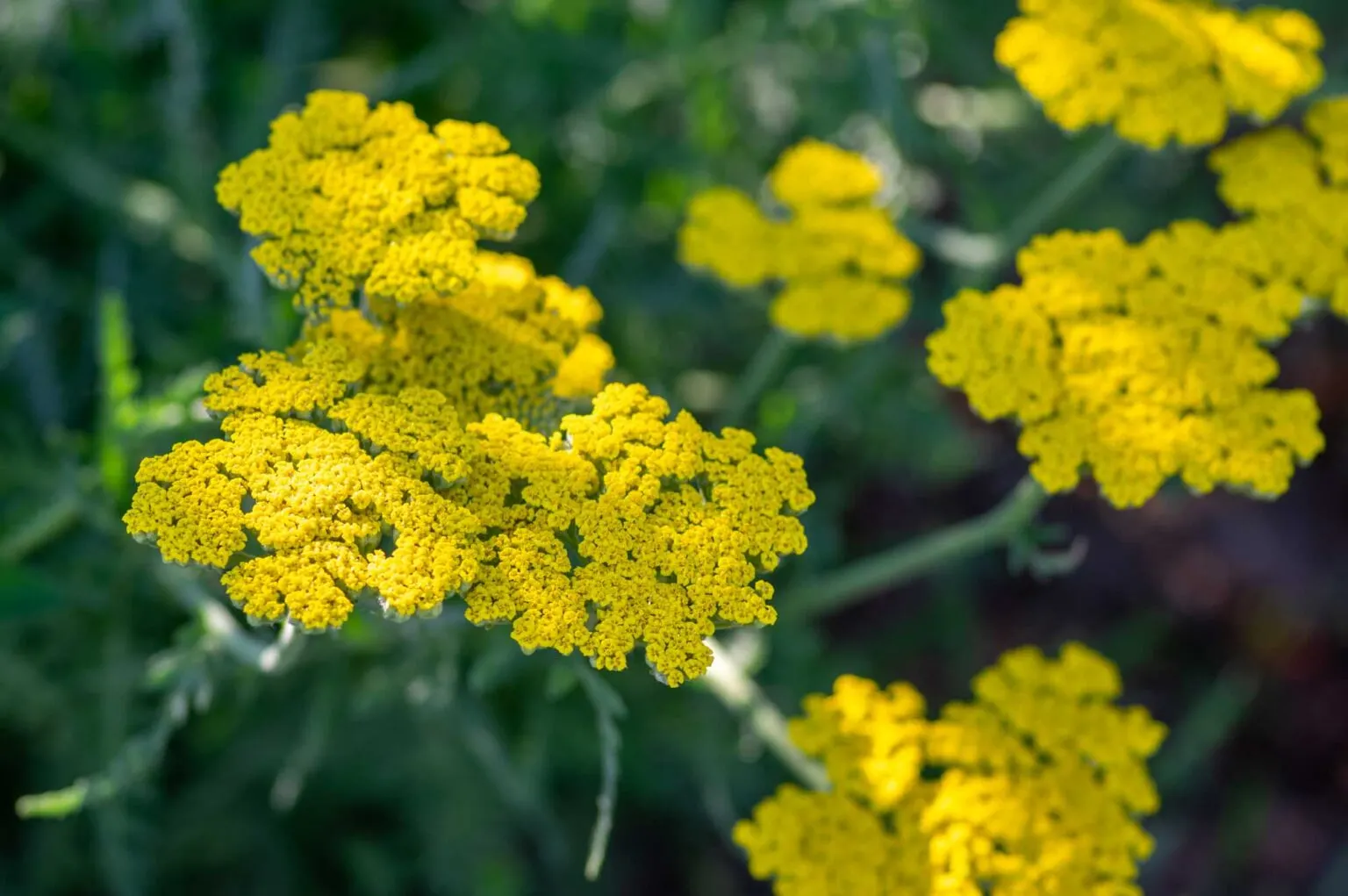
The Yellow Yarrow, or “Nosebleed flower,” is a tough plant that loves the sun and grows yellow flowers. It’s easy to care for, doesn’t need much water, and can grow in not-so-great soil. Besides looking pretty, it also helps bring bees and butterflies to the garden. People used to use it to stop bleeding, which is why it has that nickname.
50. Guineafowl Puffer
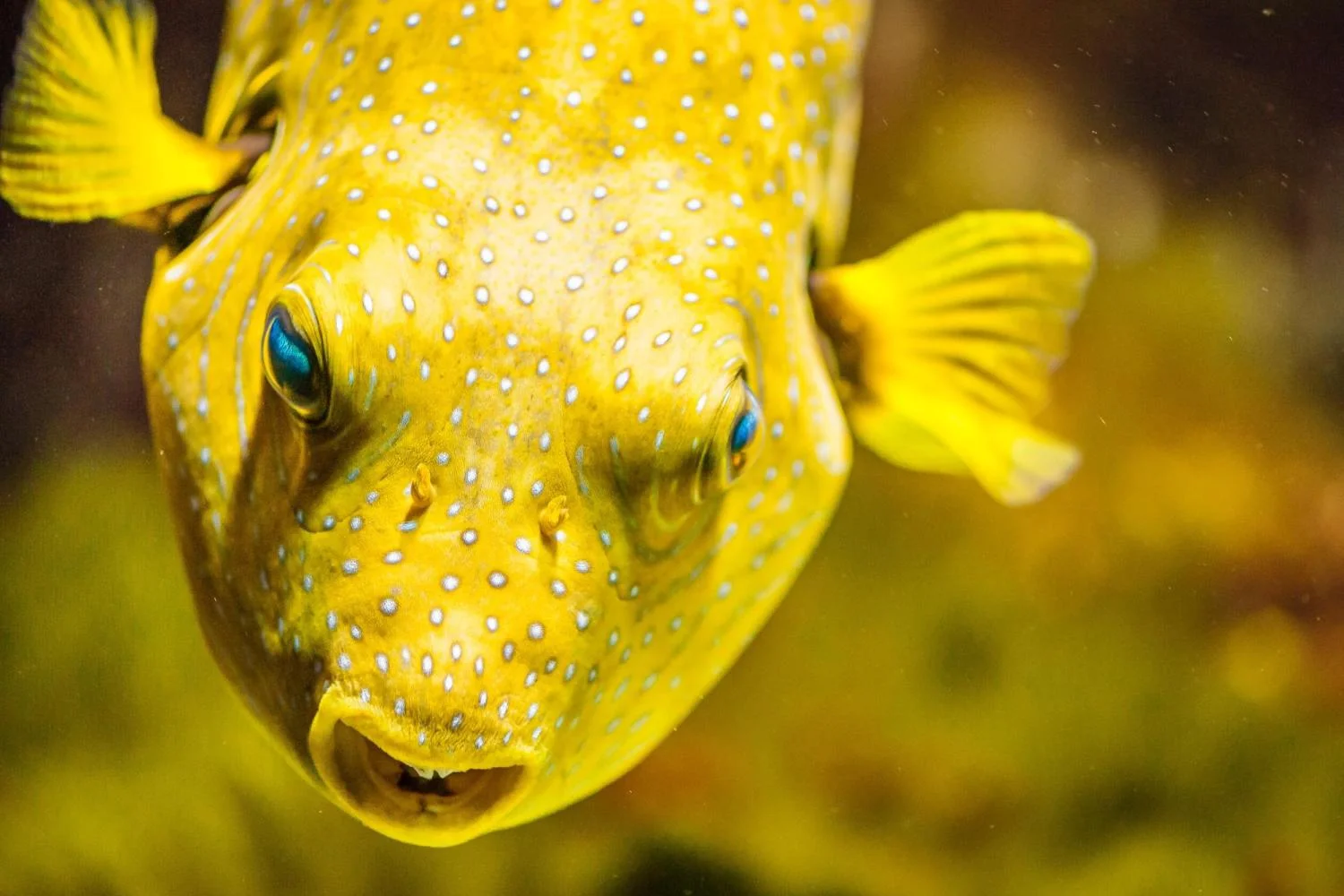
The Guineafowl Puffer is a special kind of pufferfish with a round body and spots like a guineafowl. It lives in warm ocean waters and can puff up to look bigger when scared. This fish has a strong poison to keep predators away. Some people like to keep them in big fish tanks because they look interesting.
Exploring the yellow wonders of nature shows us how this cheerful color brightens our world in many ways. From tiny fireflies to vast fields of sunflowers, each yellow thing adds its own special touch of joy. This journey reminds us to appreciate the vibrant colors around us and to keep discovering the beauty nature has to offer. So, keep your eyes open for more colorful surprises in the world around you!

